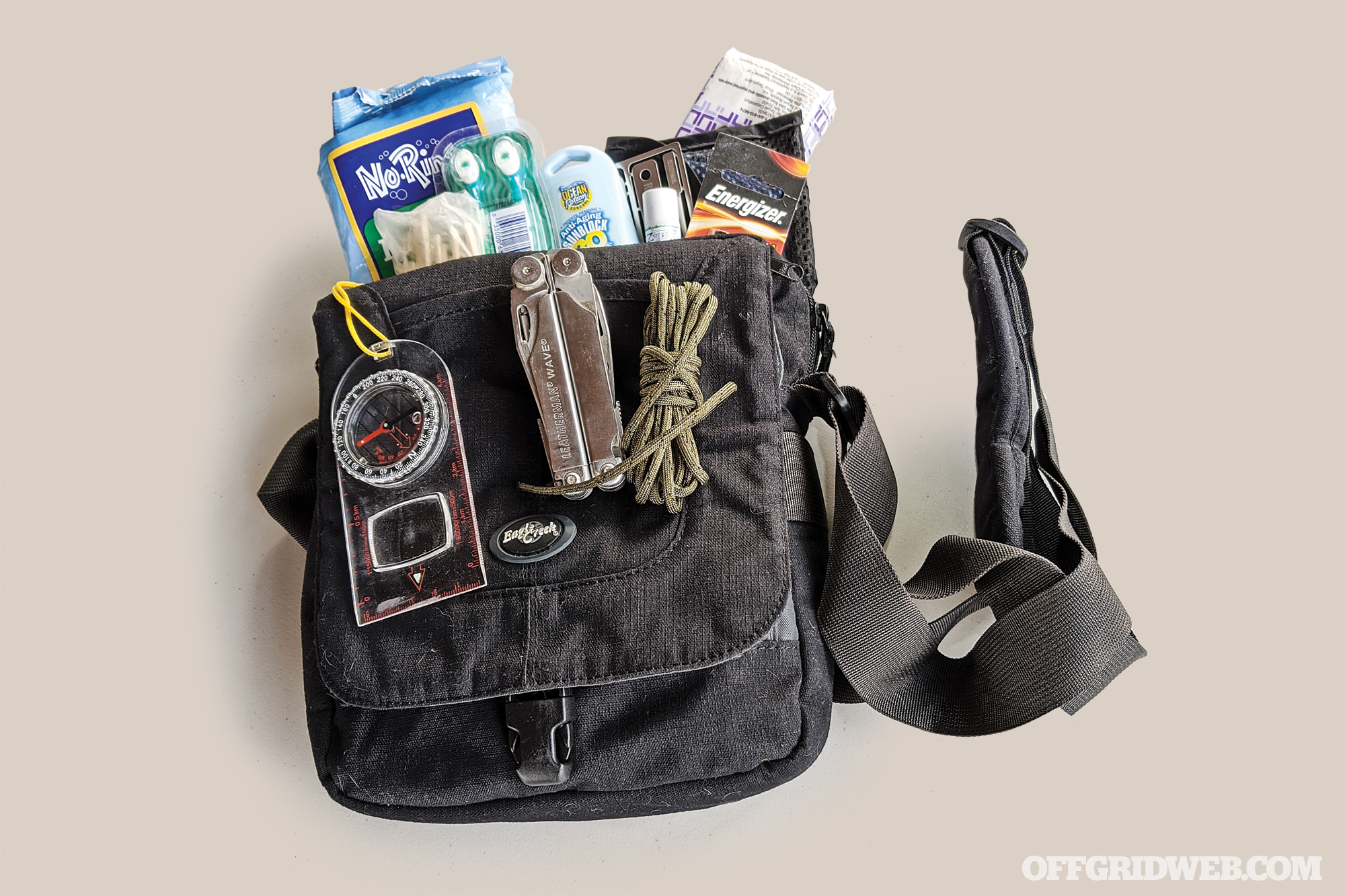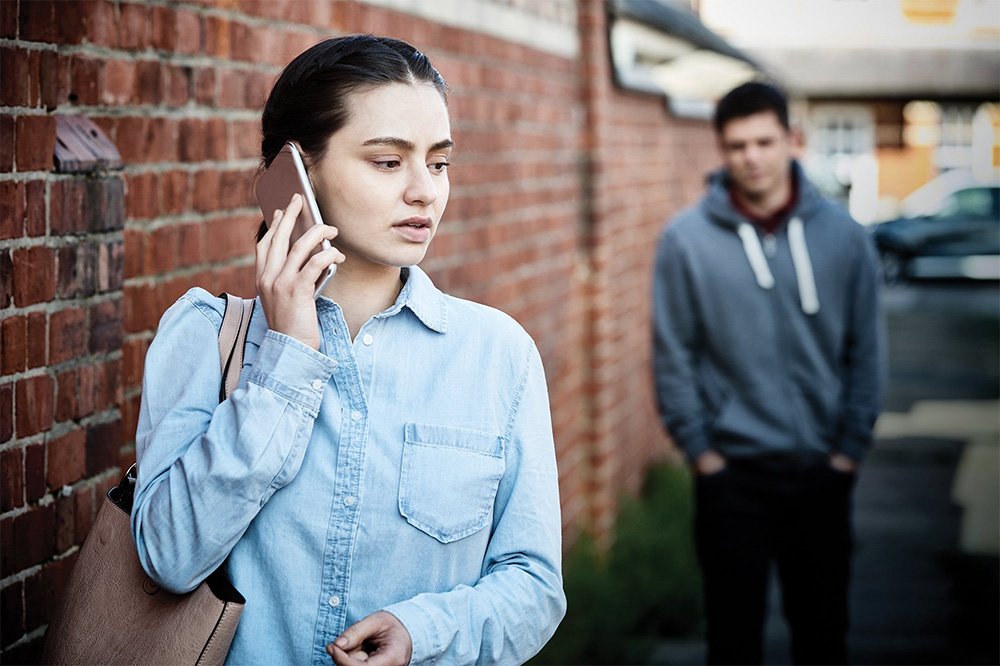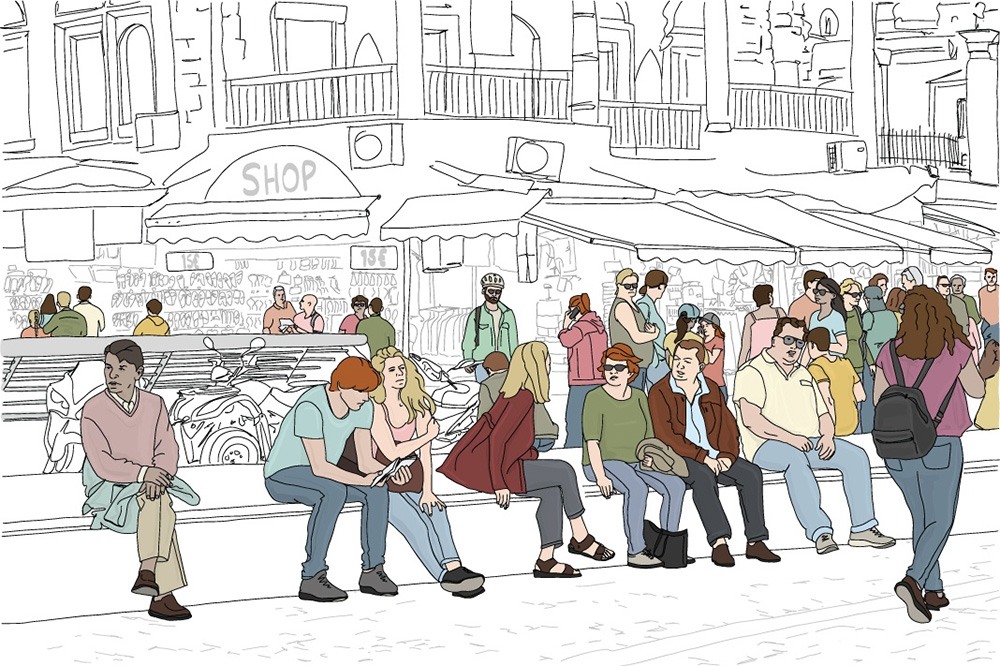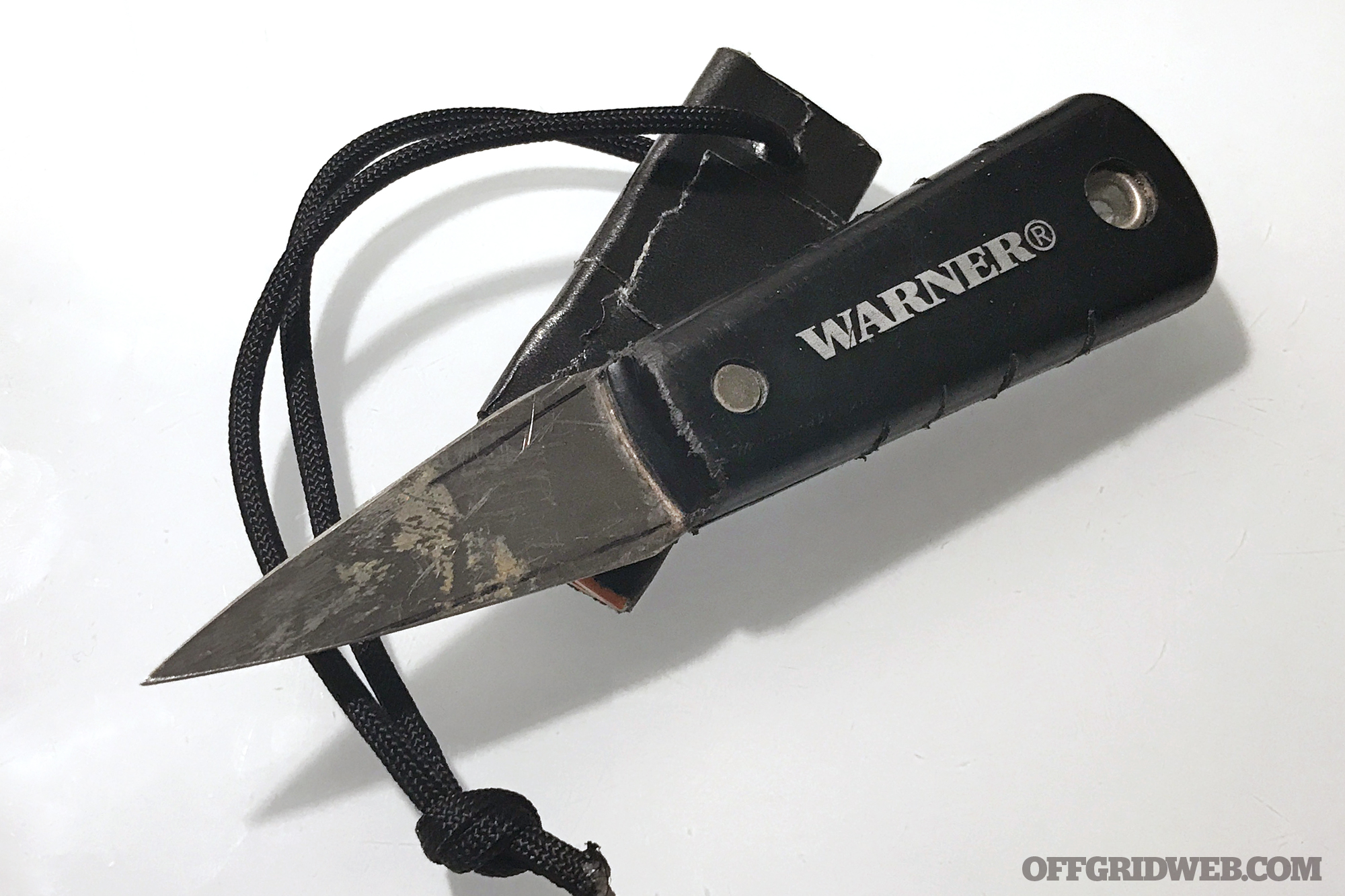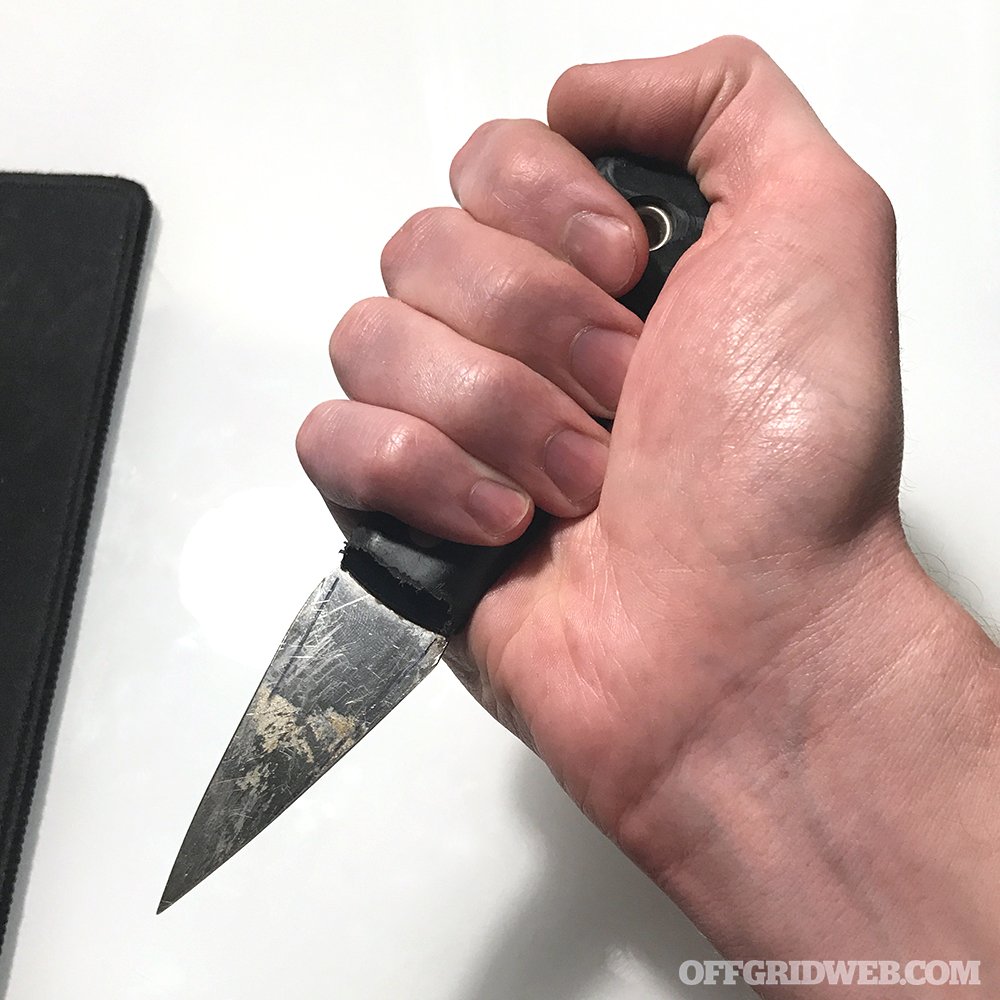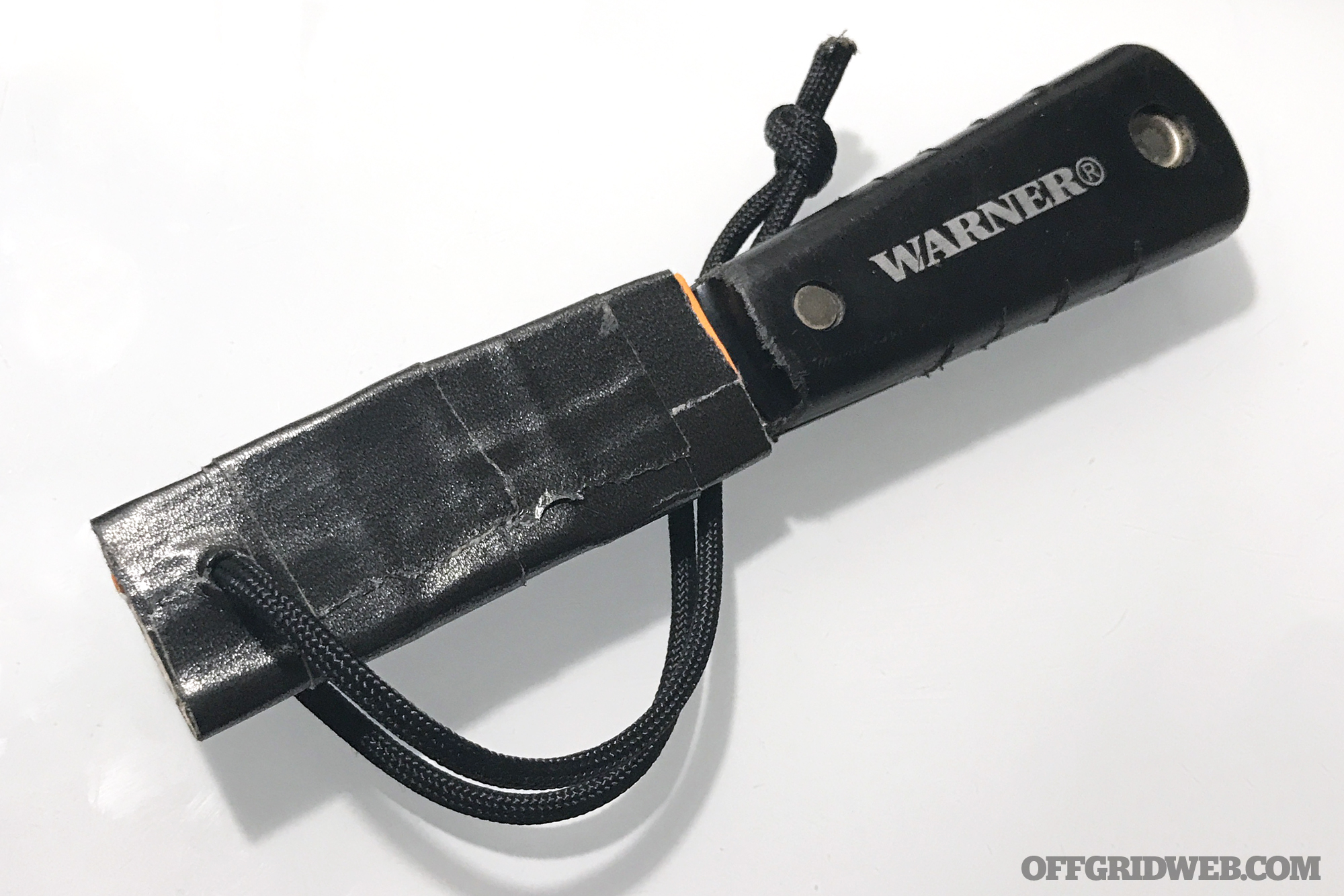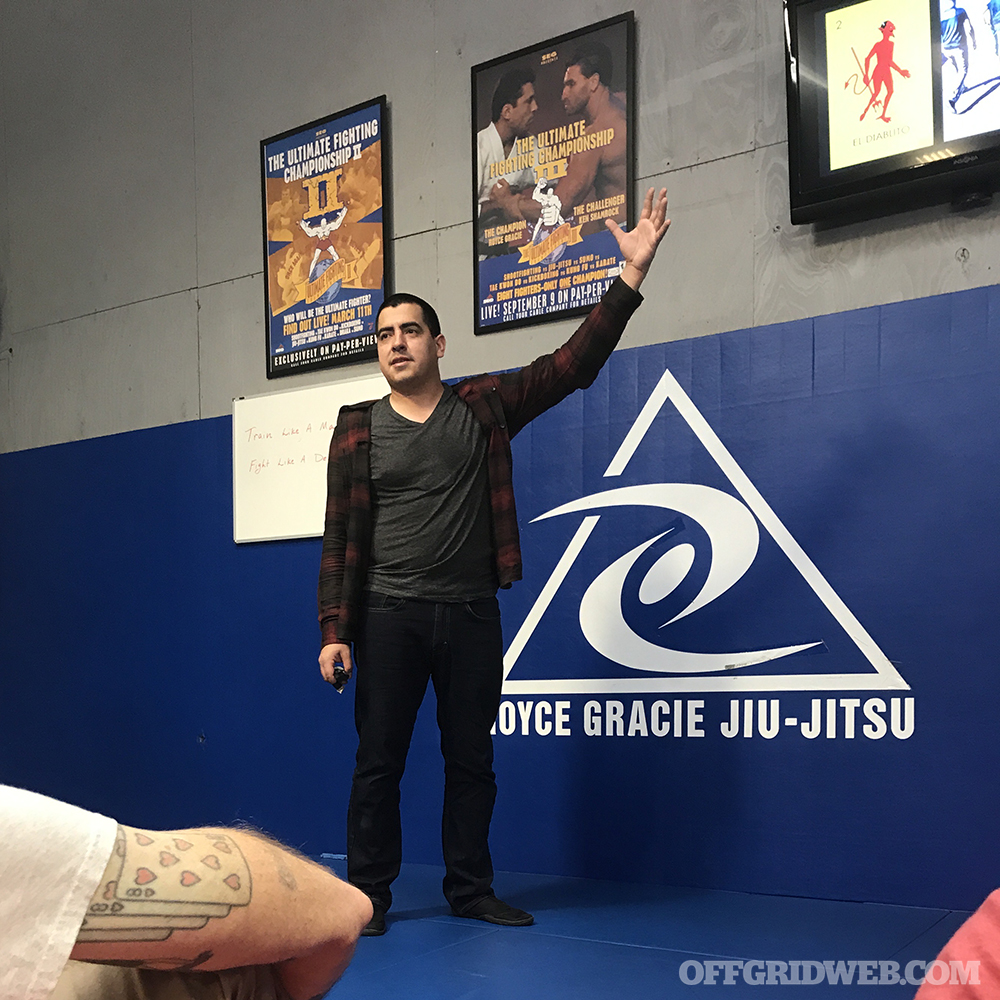Studies have indicated that around 17 to 22 veterans die by suicide on a daily basis. According to a recent piece in Military Times, “Veterans are 1.5 times more likely to die by suicide than Americans who never served in the military. For female veterans, the risk factor is 2.2 times more likely.” Think about that. As you read this almost two-dozen family members may have received a call today from someone who started off the conversation by saying, “We regret to inform you that …”
It seems like an almost insurmountable problem. That is, until you meet people like Brady Pesola who care enough to deal with it proactively. As a fellow veteran, he’s lived through it and seen his share of those in the armed forces who’ve fallen on hard times. Rather than just assume someone else will come up with an effective solution, he took it upon himself to found Triple B Adventures to help give his brothers and sisters, as well as their families, a safe path to escape the hopelessness many feel after they rotate out. And by that same token, their involvement has inspired them to pay it forward for others who may also be sitting around feeling unwanted and wondering if there’s any reason to keep going.

While there are lots of survival instructors out there, not many use that instruction as an opportunity to help those survive one of the darkest places they might ever find themselves — their own mind. What began as a simple passion for the outdoors and an understanding of how to navigate its dangers has blossomed into an effort to help veterans find a purpose again, build a community of like-minded individuals, and make peace with the trauma and isolation they’ve endured.
Brady isn’t a what’s-in-it-for-me kind of guy. He doesn’t expect to be famous, nor would he ever step on others to flog his own self-importance. His reward is in helping those who feel forgotten or helpless, and serving a purpose greater than himself. After all, that’s what being in the military is about.
Our Interview with Brady Pesola
RECOIL OFFGRID: How did your childhood influence your interest in teaching survival?
Brady Pesola: I grew up in the north woods of Minnesota. I learned how to hunt and spent a lot of time outdoors trying to make my own traps and shelters. For most kids growing up in that kind of place, the outdoor life is something you’re automatically a part of. They come into your school in the sixth grade and teach hunter safety. When you’re at home, you’re out in the woods running around with your friends building forts, shooting, fishing, and doing something outdoors. My dad taught me some common-sense things so he wouldn’t have to worry about me, like navigation, how to start a fire, and how to build shelters, which came from watching him build deer stands. I got pretty good at it, and it got to the point where he’d use what I made for hunting.
I always like being in the woods. Growing up, times weren’t easy, and I didn’t have a lot of friends in school, so I spent a lot of time in the woods. I always go to the woods to find peace. My way of calming down after a rough day or week is to strap on a pair of boots, put on a pack, head out, and get lost in nature. A lot of me going out into the woods and learning survival is just mental health and getting away from it all. I grew up as an only child on a farm, so I was kind of used to being alone as a kid. For me, that’s where I find peace. Knowing I can handle myself in nature is really cool.
You say you didn’t have a lot of friends. Why’s that?
BP: Growing up I was kind of a loner. I was a skinny kid and had a really cocky attitude I got from my mother, so I didn’t get along really well with other kids in school. I was always very socially awkward and didn’t fit in much. I got picked on here and there and got in a few fights.

On their way to a daddy/daughter day out climbing and hiking in San Diego.
What made you want to join the Marines?
BP: I grew up in a small mining community and didn’t get along with a lot of people up there. My senior year is when the World Trade Center was attacked. What’s strange is we were getting our class picture when the towers were hit, and when we came back inside there was all this chaos. We spent most of the day watching the news. A couple weeks later I saw a C-130 dropping Rangers off the back of it on the news and thought that was pretty cool.
The Army had already talked to me, and I was like, “No.” The Navy talked to me, “No.” The Marines got through to me because they really built themselves as the best branch out there — the strongest and the toughest. Being someone who was skinny, weak, and always got picked on, that appealed to me because if I was going to join the military, I wanted to be a badass and thought the Marines were the way to go. I don’t regret it to this day.
What did you do during your time in the Marines?
BP: Nothing crazy, I was a radio operator with a field artillery unit. I went on a lot of exercise deployments, but nothing combat related. I made a lot of friends and went to a lot of places like Thailand and Australia, but artillery is like a whole different kind of thing. It’s a weird MOS (military occupational specialty). In the military you, have CO versus grunt. Artillery is like that transition. We do grunt work, we go out and shoot machine guns, do a lot of dig-and-fight holes, and shoot artillery. We’re always out in the field and a combat arms MOS, but not a frontline. We’re about 15 clicks away shooting big rounds at the enemy when the infantry calls us. As a radio operator, I got to go experience time with the forward observers, different batteries, and see some cool things, but artillery can be fun. It’s what you make of it.

Trout fishing with fellow veterans at a Triple B Adventures to the Sierras. First trout of the day!
How long were you in for?
BP: I did four years from 2002 to 2006, got out, and was recalled back into service around 2007 and took orders till 2008. They recalled a bunch of us and made us base MPs (military police). It’s one of those despised MOS’s, but once I was there I made the most of it. Being an MP really wasn’t my favorite thing.
You had a lot of calls to investigate suicides during your time as an MP, right?
BP: We responded to a few in the barracks, and it’s just part of the program there. You see a lot of different things and kind of the dark side of the military that most people don’t see, from domestic assaults to people doing dumb stuff and hurting themselves to gangs. It’s things you don’t think you’ll see in the military. When you’re in a unit, you see people doing dumb stuff, but as an MP you see the bad things on a whole other level.
You see some guy who got back from combat and his wife’s pregnant with someone else’s kid or someone’s having a bad day and takes it out on their wife, or the wife has a bad day and takes it out on her husband. When you see gangs in the military, you’re surprised. You’re like, why? Why are there gangs in the military? Being an MP opens your eyes to the sh*tbags that exist in the military.
How do you think those experiences affected you?
BP: It made me appreciate what MPs do. A lot of people come down on MPs. It’s not a great MOS because the military looks at MPs as “blue falcons.” Those are snitches. In the Marine Corps it’s all about brotherhood and having each other’s backs, but when you become the MP your inherent job is to enforce the UCMJ (Uniform Code of Military Justice). Granted, Marines shouldn’t be doing dumb sh*t. When you go out and see them getting in trouble with DUIs or running people over, how can you have a Marine’s back that just outright hurt someone doing something stupid?
It made me understand the MP culture a lot more. There are different cultures in the military. Artillery has their own culture, infantry has their own, air wing certainly has their own, Recon, every MOS has their own culture. They’re all very different, and it’s interesting to see. Maybe I’m more objective in my view, not in a bad way, but by seeing all different sides of the military you realize it’s a big place. A lot goes on.

On the local news talking about an upcoming event and gear for the backcountry.
When you finished your career in the military, did you know what you wanted to do going forward?
BP: I still don’t know [laughs]. When I got out after my recall, I took a few months off and signed up for a police academy in San Diego. I went in as an open enrollee with the GI bill and put myself through a six-month academy. It was a good time and interesting. I learned a lot about law enforcement and thought I wanted to be a cop, but it didn’t work out. I applied and got rejected a couple times for stupid stuff I did back in the day as a Marine, so I figured it wasn’t for me, but while I was in, I started going to other classes and continued applying. That’s when I started going outdoors in nature and hiking more, shooting little videos here and there.
I began to see how a lot of people in the San Diego backcountry would be making mistakes. A lot of money is spent by the county on search-and-rescue, and they don’t charge for that. People were getting themselves hurt and doing dumb things because San Diego is hot, and people take the front trails for granted. They’d buy a Starbucks, not bring any water, head up at noon in all-black spandex, and then be overcome with heatstroke.
I started thinking to myself how I could prevent that. How could I do something that teaches these people not to get injured outdoors and do stupid things? That’s when I started teaching outdoor education and survival. How to bring water, pack the right gear, wear the right clothes, and best practices for going out hiking rather than going out at noon in August, which isn’t the brightest thing to do.
You also work in private security, right?
BP: Yes, I’m a security contractor. It’s fun, but I definitely use a survival mindset when it comes to security contracting. Attention to detail and surveying my environment, whether it’s executive protection or as a private investigator. If I’m on a protection detail, I’m looking at and studying people. I’m looking at behavioral patterns. I’m looking at possible threats. My job is to avoid a situation before it happens. It’s my belief that anytime I’d have to pull my firearm or put my hands on somebody then I haven’t done my job correctly by paying attention to my environment.
How would you describe the type of survival instruction you provide?
BP: I look at survival instruction as a complementary skill on top of the outdoor skills one should already have. Survival has gotten really popular with TV and all that, but TV has made survival look like this advanced skill that only Special Forces people and guys living out in the woods know. It’s really not that hard of a skill. Survival is just problem solving.
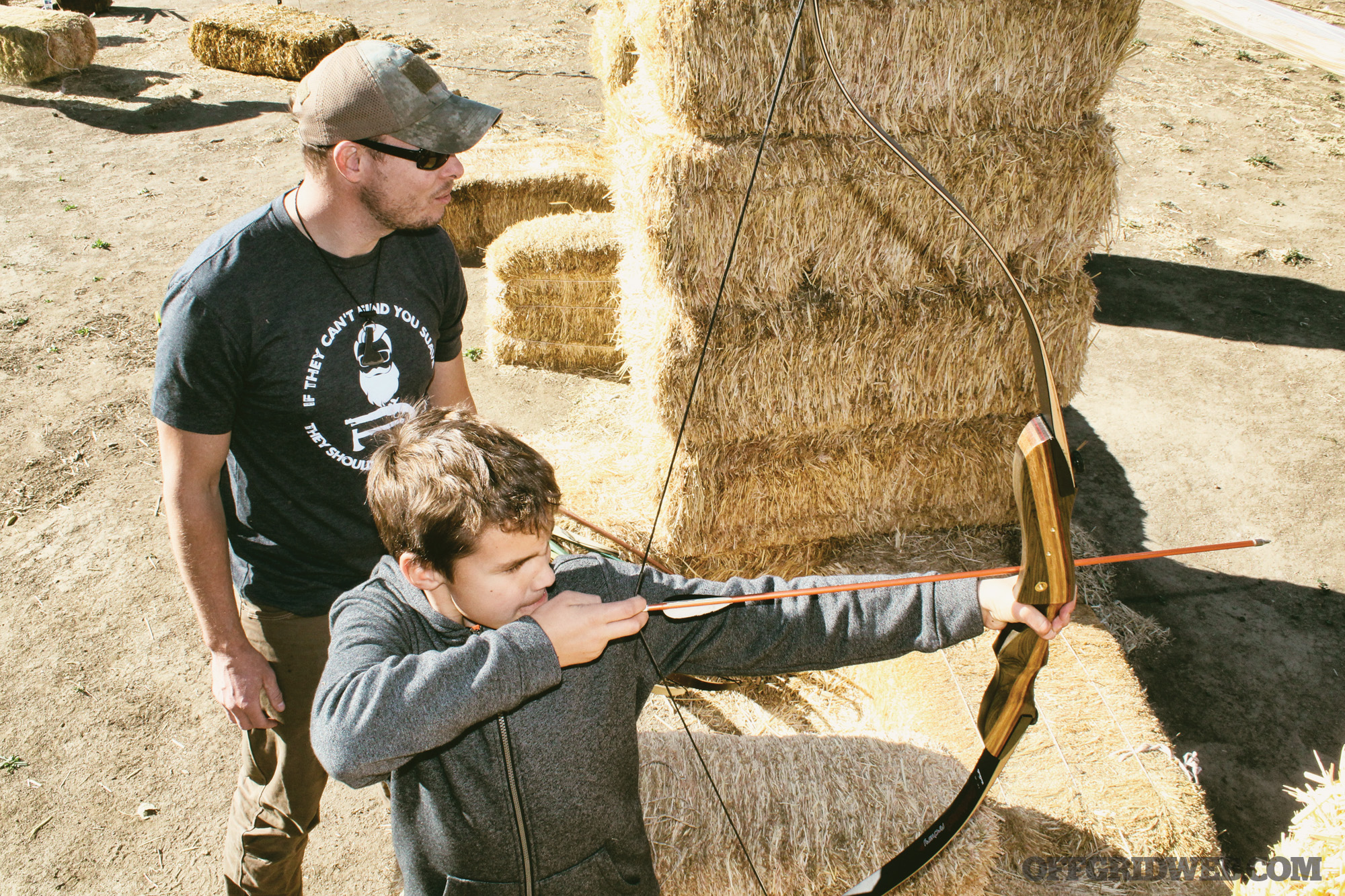
Brady teaching youth to shoot a bow at Triple B’s fundraiser called the Modern Man Mountain Rendezvous (3MR).
People make it out to be this intense, crazy thing because TV has really bastardized it and made it look like this austere skill where you have to be this bushcraft hippie ninja, and that really isn’t it. It’s simply just going out in the woods and learning if you take this stick and this stick, of this type of material, and do this type of action, you can make a fire, build a shelter, or do something else. It’s utilizing Mother Nature to withstand whatever Mother Nature throws out at you.
You’d mentioned taking hunter safety in elementary school. Things like that used to be commonplace, but now seem to be predominantly missing from the educational system. What do you think kids need to be taught about survival?
BP: Parents should teach their kids about navigation, water, and common sense. Stay on the trails unless you’re confident in navigation. Bring water with you all the time; always have first aid. Survival starts before something happens. Study the trails you’re going to hike. Know what the weather will be like before you head out there. Know where you’re going and how to get back.
People look at survival like it’s this event that just randomly happens. Survival doesn’t happen until after a catastrophic event, like a plane crash, falling off a cliff, getting lost, or having a hunting accident. It’s generally after an injury has occurred, but survival really starts before the situation happens by being prepared. That’s why I think parents need to teach their kids to always be prepared and have a mindset of being aware of your surroundings or thinking ahead about what they should do before they perform that action. So if they’re going into the woods, they should prepare themselves with proper gear like hiking shoes, a good pack, a first-aid kit, water, food, a compass, or GPS. That’s where survival starts. It’s just common sense.
How do you discuss survival with people who have misconceptions about it and convince them it is common sense?
BP: I start by calling it something else. Whenever anyone hears “survival” they think of some overweight backcountry redneck who wears camo and uses old military gear. That’s not a survivalist. That’s just a country boy. When people call me a survivalist I kind of cringe and am like, “Don’t call me that.” It’s problem solving. That’s all it really is. It’s being out in the woods and you’re cold. OK, what’s the solution to that problem? Build a fire. OK, how do you build a fire? You bring things with you where you can make a fire if you get lost. I always have a necklace that has a ferro rod on it with me wherever I go. As long as I have something sharp, I can scrape that and make a fire no matter where I go. Fire increases your survivability exponentially. I carry something on me that’ll increase my chances of survival no matter where I am or what I do.
When I tell people about “survival,” I don’t really call it that. I call it wilderness problem solving. The philosophy of problem solving can be finessed so you have a problem-solving mindset. Problem A requires solution B. OK, so what do I need to get done? If you have that mindset you can apply that to any situation you come across: tactical problem solving, wilderness problem solving, life problem solving, urban problem solving. The same kind of mentality used to change a tire is the same type you can use to build a shelter in the wilderness. I want people to know that survival is just a complementary skill that you should know on top of the common-sense skills that you should already have.
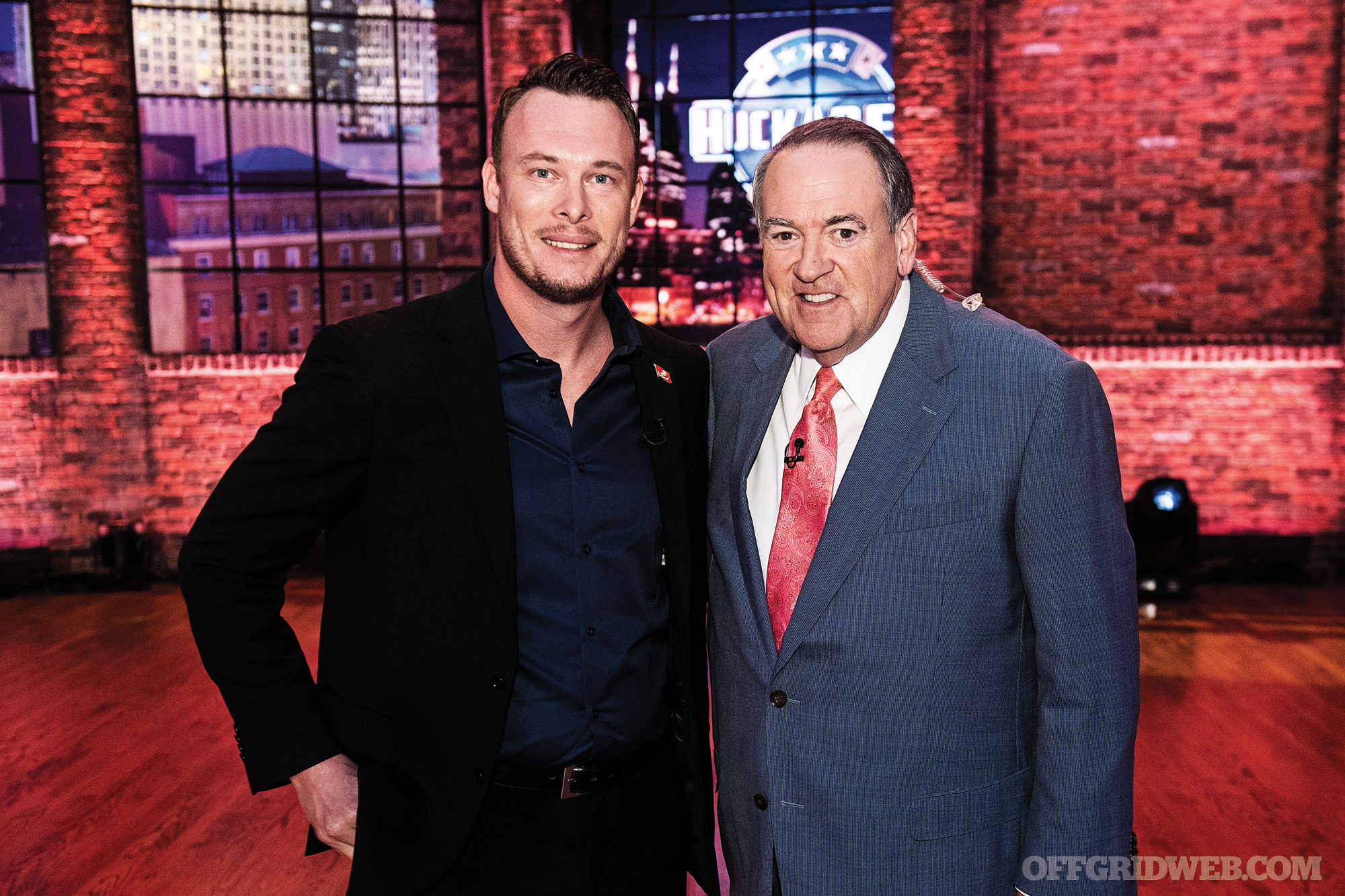
Brady with Governor Mike Huckabee on the Huckabee Show to talk about Triple B and what they do with veterans.
How would you describe your National Adventure School endeavor?
BP: It’s going to be a bit different than most outdoor education schools. National Adventure School is not only going to have classes that teach outdoor education along the lines of wilderness problem solving and survival, but also along the lines of really learning your gear. Focusing on being prepared for that trip and how to use that equipment during that trip.
We also teach things like astro-photography. I have a friend who is an astro-photographer and astronomer, and we want to bring that fun back into nature again. We want to teach people how to take that really cool photo at nighttime where you see the constellation. It’s not that hard, so we want to teach people how to do really simple stuff like that. We want to bring that kind of wonder back into it. People wake up, go get a coffee, and go hiking, and there’s nothing wrong with that. There’s people who look at a map of the backcountry and want to go explore it. We cater to all those kinds of personalities.
What was it that compelled you to work with veterans?
BP: When I was teaching outdoor education with the San Diego School of Survival I was bringing veterans out with me. I didn’t have the network I do now when I started. Every time I’d meet a veteran they’d be like, “That’s so cool. You get paid just by going out in the woods and teaching people?” I’d tell them, yes, and I figured out a way to apply my skills, knowledge of the outdoors, and how to monetize it. Or there’d be vets who’d call me because they wanted to get out and go for a hike in the woods, and maybe I’d be teaching land nav that weekend and I’d offer them a chance to come along with me and earn some cash as my assistant.
We’d be out there in the nice, cool weather. The sun’s coming out just enough to warm your back. The wind’s blowing through trees, and you’re watching clients walk through the woods with a map and compass trying to find their target. Your whole job that day is to answer questions and make sure they don’t get lost. That’s a really fun experience and people who come with me see that. They feel like they’ve had a good day just getting outdoors. I can see that, especially with people who’ve been in combat, being out in the woods in a different environment was really helping them out. You can see a certain weight come off their shoulders. They’re out in the woods with another veteran, having a great conversation, and getting paid. You can’t beat that. Just being outdoors like that creates a special feeling that’s a different sort of relaxation.
When I started doing that, I could see that being outdoors was really affecting them. And then I started taking buddies camping out in the desert, having a fire, having a few beers, a steak, climbing around the boulders, and doing some hiking. People would come up and thank me, saying it was just what they needed; that they’d just wanted to get away and get their mind off things. That was pretty cool. I started meeting more veterans at outdoor-related functions. The more I met, the more I saw that they had business leads and ideas for being a veteran in the outdoors, and they helped me create Triple B Adventures. It’s a whole group of us who really set it up. Triple B Adventures started in 2016.
We’d done something called the Modern Mountain Man Rendezvous that same year and that’s where I met a whole group of veterans, and we talked about fulfilling this dream of making money and working in the outdoors. One of them runs an outfitting company. A bunch of them had done different things, and we all came together with this idea of getting veterans outdoors and creating this network of vets in the outdoor industry.
In November of that year, a bunch of us went out camping and had a good time sitting around the fire, telling stories, having a few beers, getting things off our chest, and enjoying each other’s company. It was a really good time. At that point, it began as Triple B Adventures, which stands for beers, bonfires, brotherhood. It started there, and I talked to my friend Colin and asked him to be my assistant director. There was a financial attorney there who was a vet, and I asked him to be my CFO. He filed the paperwork for the nonprofit, and we became Triple B Adventures.
Tell us how Triple B Adventures has evolved since then.
BP: Triple B has evolved from starting out small to creating this network of vets. There are a lot of people around here in San Diego who know what Triple B is. Not everyone gets outside with us because not everyone likes to go camping, but the ones who do really seem to enjoy the time out there, the camaraderie, and the fun we have. We take veterans outdoors every month without fail. Every month we either take them out camping, hunting, hiking, fishing, or shooting. A lot of them seem to like it, and we’re always there for someone who says they need to get outdoors. We tell them to come out with us, and it’s free. It doesn’t cost anything. People can donate, and we can pay for the food, campsites, gear, and stuff like that. It really is a lot of fun. It can be stressful at times, but the payoff is seeing veterans being helped.
With the network we’ve created we’ve been able to help get jobs for veterans, places for them to live, help them get money, mental help, or help with the VA. It’s more than just going outside; it’s developing a network of other veterans who can help and want to help. Veterans who we’ve helped in the past want to pay it forward and help other veterans out. Part of it is being outside, but part of it is what we do with the outreach, communications, and interaction with other veterans.
What do you think those who haven’t served in the military should know about veterans and the common struggles they face after their service is over?
BP: I don’t know. I never really think about it from that view. I’m always concentrating on what veterans need to know when they get out, not be a victim, and not be broken. Stay the lethal person you were when you were in. Don’t let anxiety set in. Fight it.

Many can’t comprehend how difficult that struggle is when transitioning from service back to civilian life and they just expect veterans to figure it out and handle their problems without incident. What do you say to that?
BP: Don’t get offended by veterans. When we get out, we have a certain mentality that people just don’t get. If we say something off the cuff, give us the benefit of the doubt. We’re not trying to be malicious. People look at us like we’re these broken sociopaths, and we’re not. We just have a different way of thinking. It’s not that we don’t have empathy. We just reserve empathy for people who actually are victims of something. We look at people who do dumb stuff and have that oh-woe-is-me attitude like, no, it’s your fault and your responsibility. We tend to look at personal responsibility as a huge part of our lives. If we do something stupid, we don’t expect people to pay for it. We pay for it ourselves.
When we go into college or jobs, we may seem rough around the edges, but we’ll always have your back and be the first person to step up to fight for something. We’re always the first person to volunteer and stand up for what’s right. Don’t look at us like we’re damaged. There are veterans out there who may give that image, but the rest of us are just trying to fit in with society. We don’t want to be the abrasive veteran. We want people to know we’re not that different. We’re not all victims because a few people act like that. We’re civilians with military experience, so ask us questions. How can we help you? How can we help your business? How can our experience help? We have that leadership and strength. Spend time with veterans and talk to them. Get to know them.
Not everyone is this medicated, disgruntled person. I call those guys the Uncle Ricos of the veteran community. They’re always trying to live in their glory days. It’s time to move on, adjust, integrate back into society, look at the skills you have, and use those to better yourself and those around you instead of living in the past.
What do you think the government could or should be doing to better assist vets after they rotate out?
BP: It starts with rotating out. The military’s whole purpose is mission readiness. It’s to go out and cause hate and discontent for the bad guys. When you get out, you still have that mindset. I think they need to readjust their exit procedure for veterans. They need to be successful when they get out. I think the military needs to refocus and revamp. You’ve got 70- or 80-year-old guys trying to tell 22-year-old guys how to do their résumé. There’s a major gap there. People are teaching antiquated ways of adjusting to their environment and getting out into the civilian wilderness, as I call it. It’s tough to survive the civilian wilderness. With one week of training before you get out, it’s kind of just a checklist. It’s like, here, go get this done and then report to formation. The military really doesn’t focus on people’s lives when they get out.
But it’s also a double-edged sword, because why should they? If you want to get out, it’s on you, but if you did a few years of honorable service they should be asking, “How can we get you best integrated with the environment?” I think the government could do good by aligning certifications that are reciprocal to civilian work forces. Like police officers. When military police get out, they have to go through another academy again. I think your time and service should apply to something. It should count for more.
Instead of having to go through an academy and start over, there should be an in-service training. I think the professional certifications you had in the military like IT, fire, and police should transition better. There are jobs that, when you get out, all of a sudden they require a degree. The government should be able to somehow quantify or equalize those professions to allow you to start into a job right away when you get out rather than go back through a training procedure and start from the ground up again.
I’m sure you’ve heard a lot of stories from vets about wanting to feel needed and find stability and happiness in their lives again, especially after the horror many have experienced in combat. What would you say to those sitting around in silence wondering if their life is worth continuing?
BP: The whole reason why we join the military is to serve a purpose greater than ourselves. I grew up in a poor town and wasn’t great at school and the Marine Corps was my escape. I also wanted to do something because I watched the towers fall. We all join to serve. If you didn’t join to serve, at a certain point in your career you figure out that you were there for a greater purpose and that was the military. When you get out, you’re so used to serving an entity that meant something. In the military you feel like you belong. Like you mean something and everything you do has a purpose. When you get out, you feel like you don’t have a purpose anymore.
I think a lot of veterans are scared about falling into that background of mediocrity. When you’re in, you’re not mediocre. You’re something special. You’re well trained. You’re a good shooter. You’re something that’s different and that sets you apart. When you get back out, you don’t stand apart anymore. You fear working that 9-to-5 office job, wearing a stupid tie and listening to some chick from HR or some guy named Todd who’s talking about that barbecue on Friday. You’re asking yourself if that’s all you have to look forward to. If it is, we get scared of that and go into a depression because we realize we’re not as lethal or cool as we used to be.
It comes down to the cool factor really. Saying you’ve been in the military has pride. When you get out, you’re no longer a part of that community and you miss your friends. You get worried that you’ll just fade away in the background, and it’s scary. You feel depressed because every day you woke up you were awesome. You PT’d, you were awesome. You shot, you were awesome. Your whole life was awesome, and you were a lethal person. Your mind was lethal, your body was lethal, your whole presence was just about lethality and taking the fight to the enemy. You feel like you just don’t have that anymore.
I would tell veterans not to lose their lethality. Stay fit. Keep your mind sharp. Go to school. Connect with friends and people. That’s hard too because when you go to school you realize the people around you in class aren’t the same people who’d have your back, take a bullet for you, or shoot at the enemy for you. That’s why you seek out other veterans in the classroom because you know no matter what branch they were in, you share some commonality. You share some principles that you can identify with and you can rely on them. All the rest of the civilians in class, you can’t rely on them or at least you feel like you can’t.
There are some exceptions to the rule though; there are good people who didn’t serve who’d still have your back. But the fear is you’ve put a lot of emotional investment into these other people, whereas you see someone else in the military and you already feel that emotional investment and love you had. With a civilian you have to start that over again, and it just takes time. A lot of us don’t feel like we have that time. We’d rather hang out in the background, and unless you’re a veteran, just not talk to you. That’s a bad thing.
Veterans should get out, and meet new people, and integrate. You can still be that wolf in sheep’s clothing — that lethal person. You don’t have to be that crazy veteran; you can integrate. You can reach out, go hang out with friends, and find civilians you share things with.
Do you think feeling like an outsider as a kid gave you some perspective that helped you relate to other veterans better?
BP: Most of us veterans are outsiders and look at ourselves as outcasts of society anyway. We get out of the military, look at society, and we know we’re different. Some of us think we’re better than others, some of us think we’re not as good as civilians, and some of us look at civilians and say, “Those aren’t my people. My people are back in the military.”
The problem with that kind of mentality is that it causes that isolation and loneliness that creates depression, anxiety, and eventually suicide. Being in the military has allowed me to find my family in the veteran community. I think most of us who were outcasts in school have joined the military because it was a way of escape, finding our own family, and feeling a sense of inclusion.
About Brady Pesola

Age: 36
Status: Married with one daughter
Hometown: Hibbing, Minnesota
Favorite movie: Jeremiah Johnson
Favorite knife: Anything by Uncle Jed
Childhood idol: Kirby Puckett
Required reading list:
- Hatchet by Gary Paulsen
- The Cry of the Wolf by Melvin Burgess
- Touching the Void by Joe Simpson
- 101 Skills You Need To Survive In The Woods by Kevin Estela
Favorite Bond girl: Michelle Yeoh
Best advice you’ve ever gotten: “Shut up and listen.”
How do you take your eggs? Over medium
Most embarrassing moment: Took a buddy and his son out hiking. Was teaching them about survival and talking about how to use sap. Grabbed what I thought was a glob of sap, and it grew legs and started moving. I’d grabbed the fat end of a big spider and freaked the f*ck out. I threw it and started shaking my hands like a little girl.
URL: www.tba.vet; www.nationaladventureschool.com


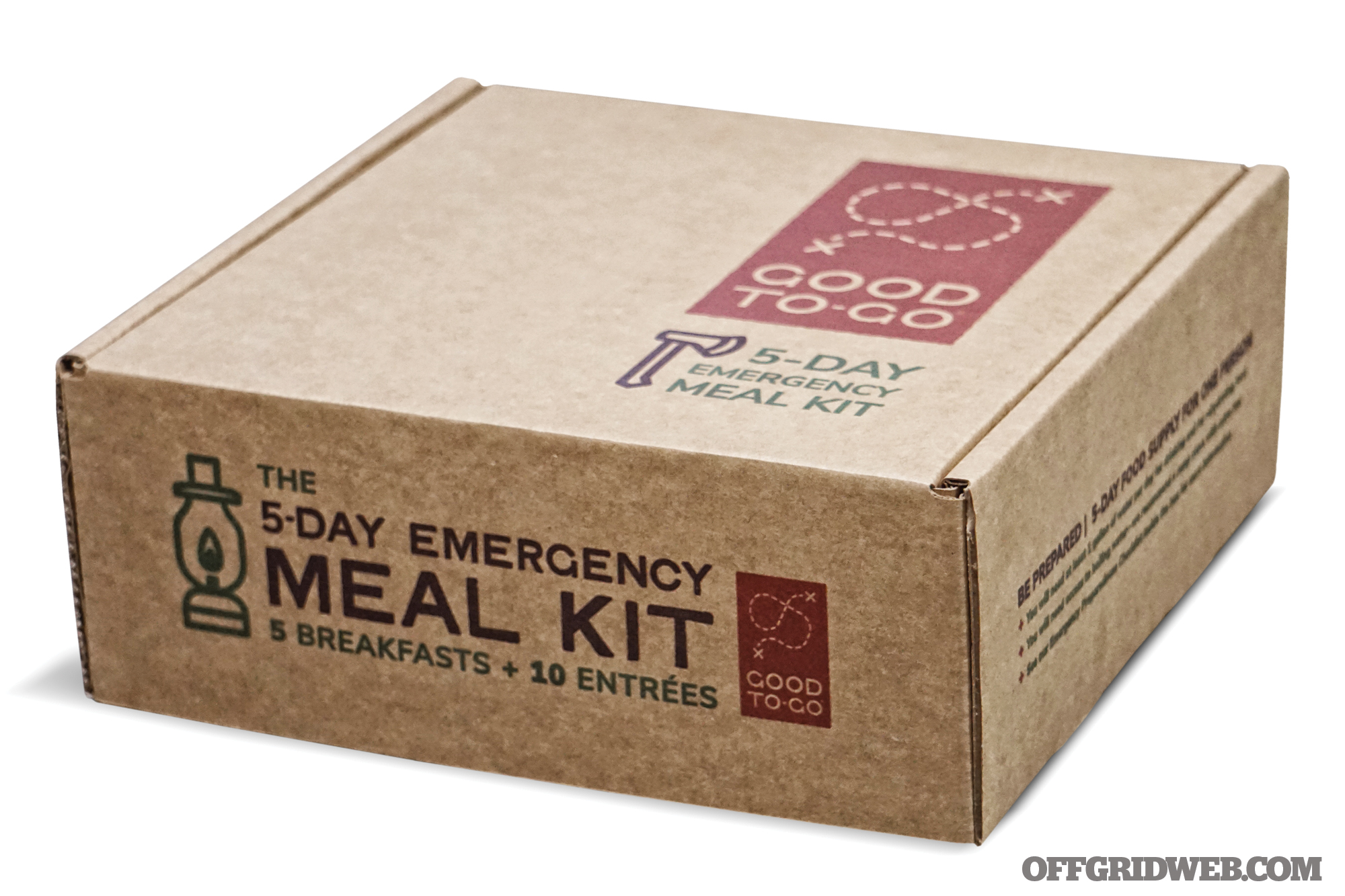

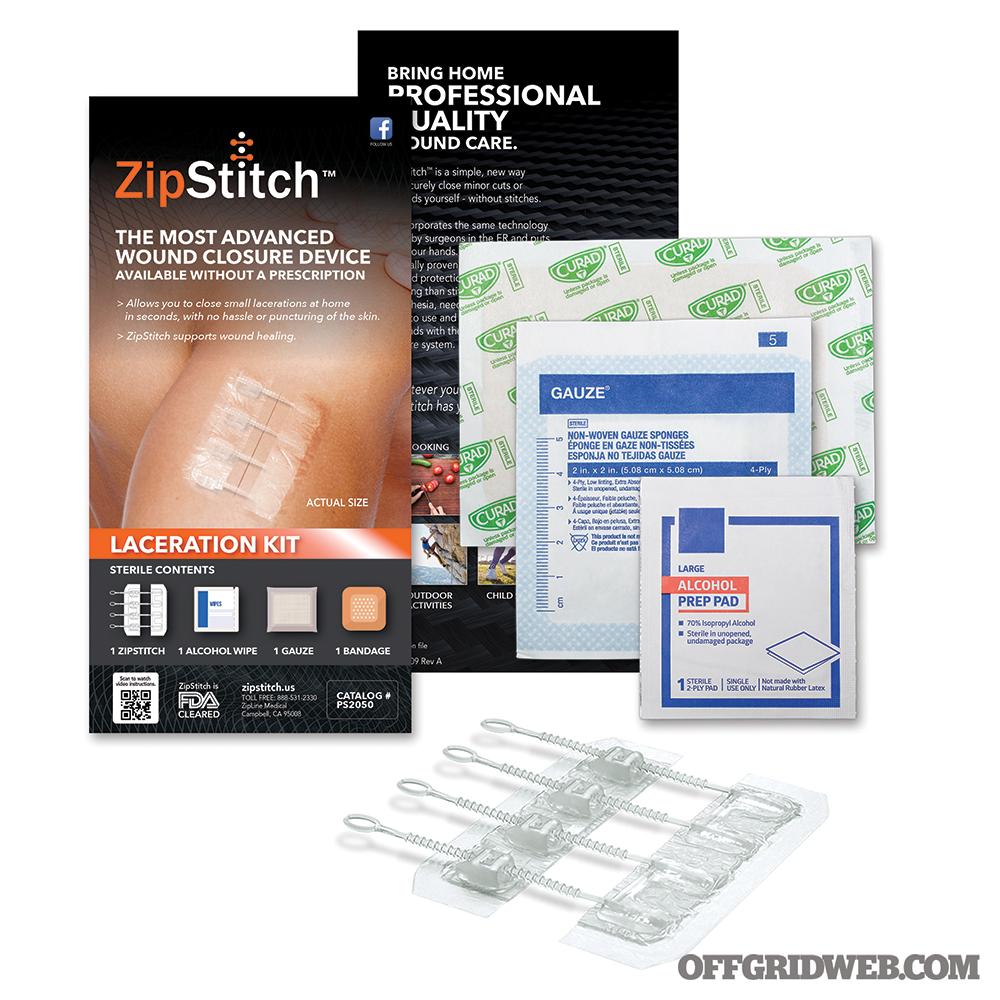
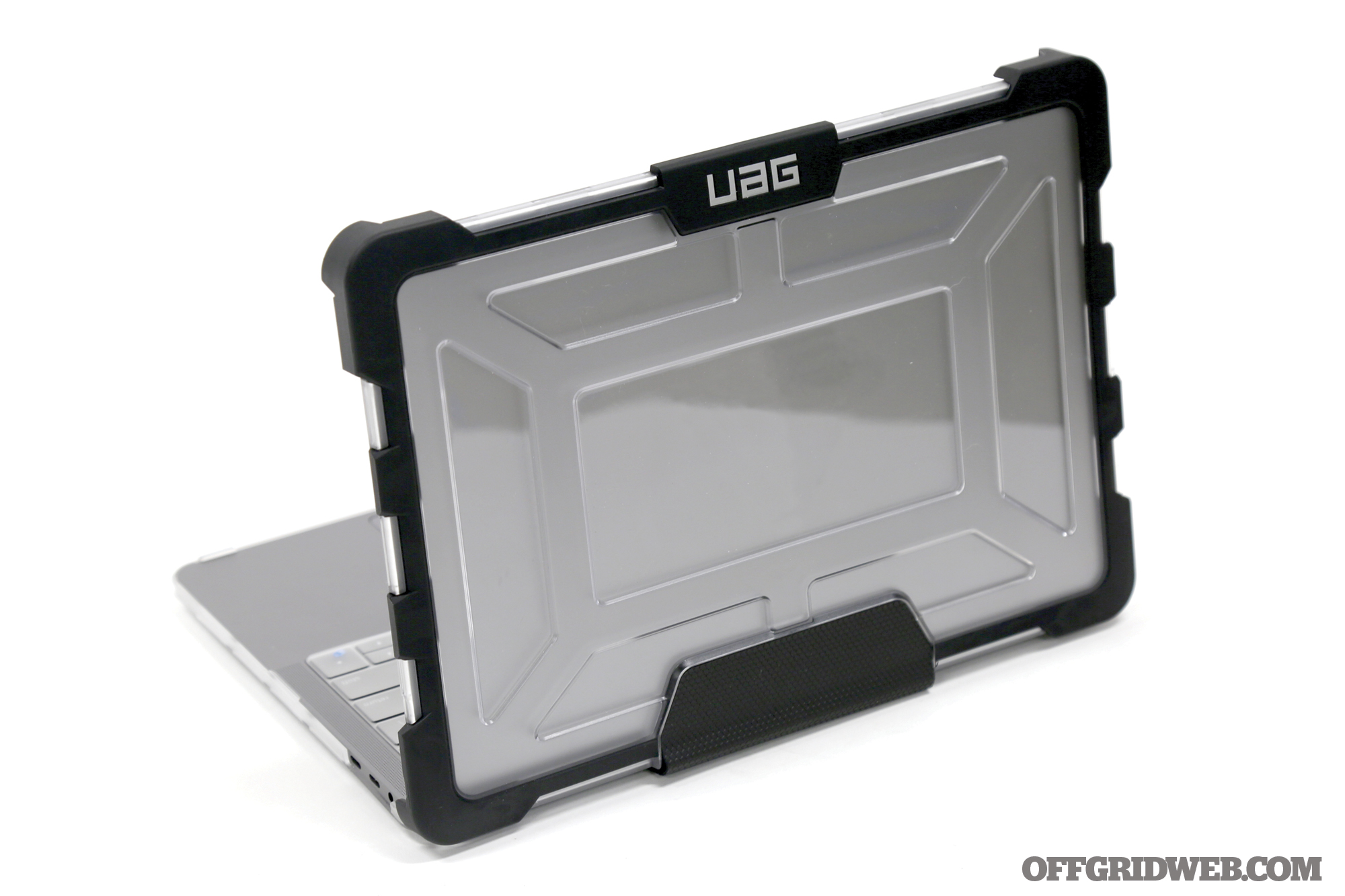
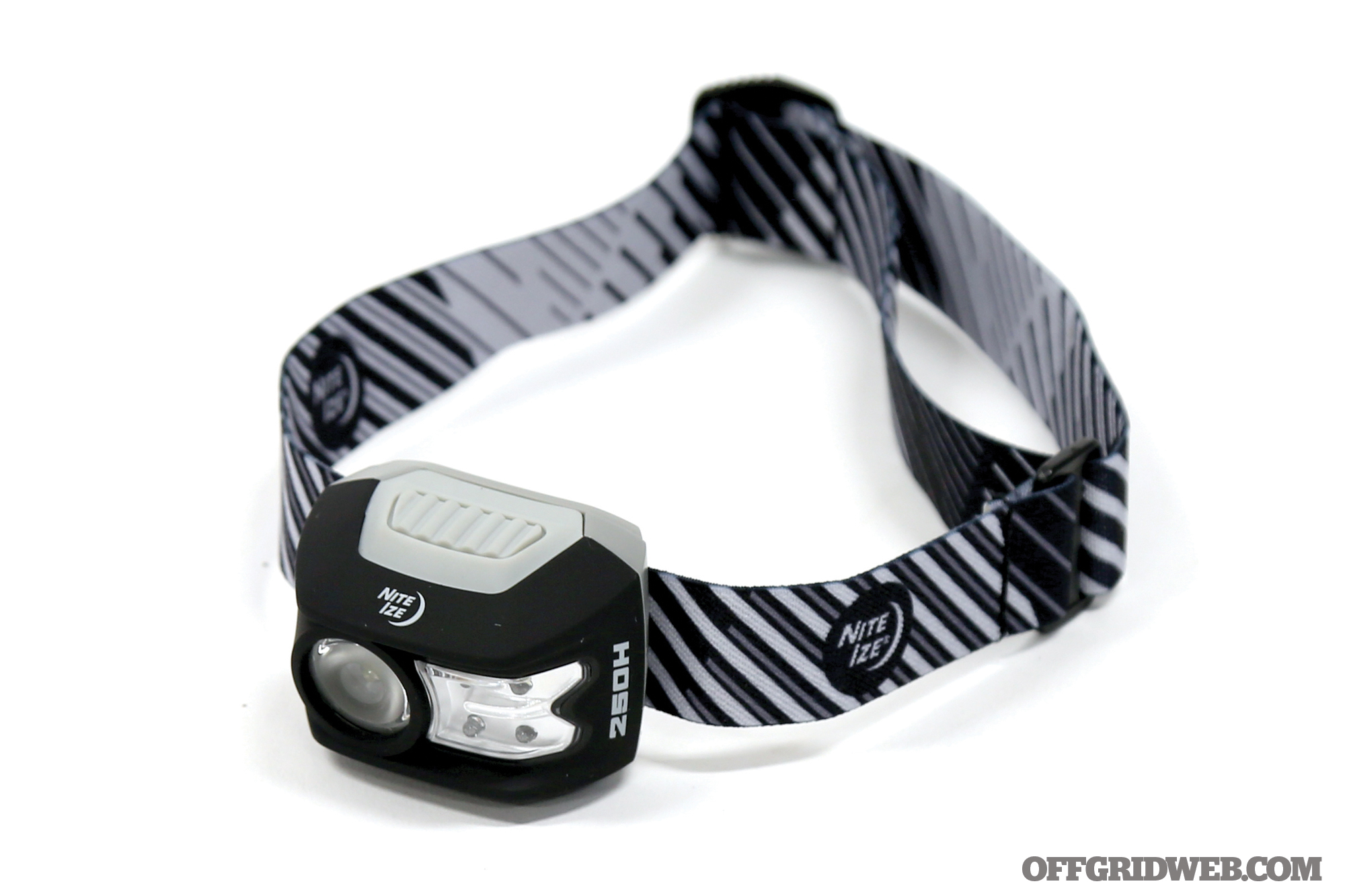

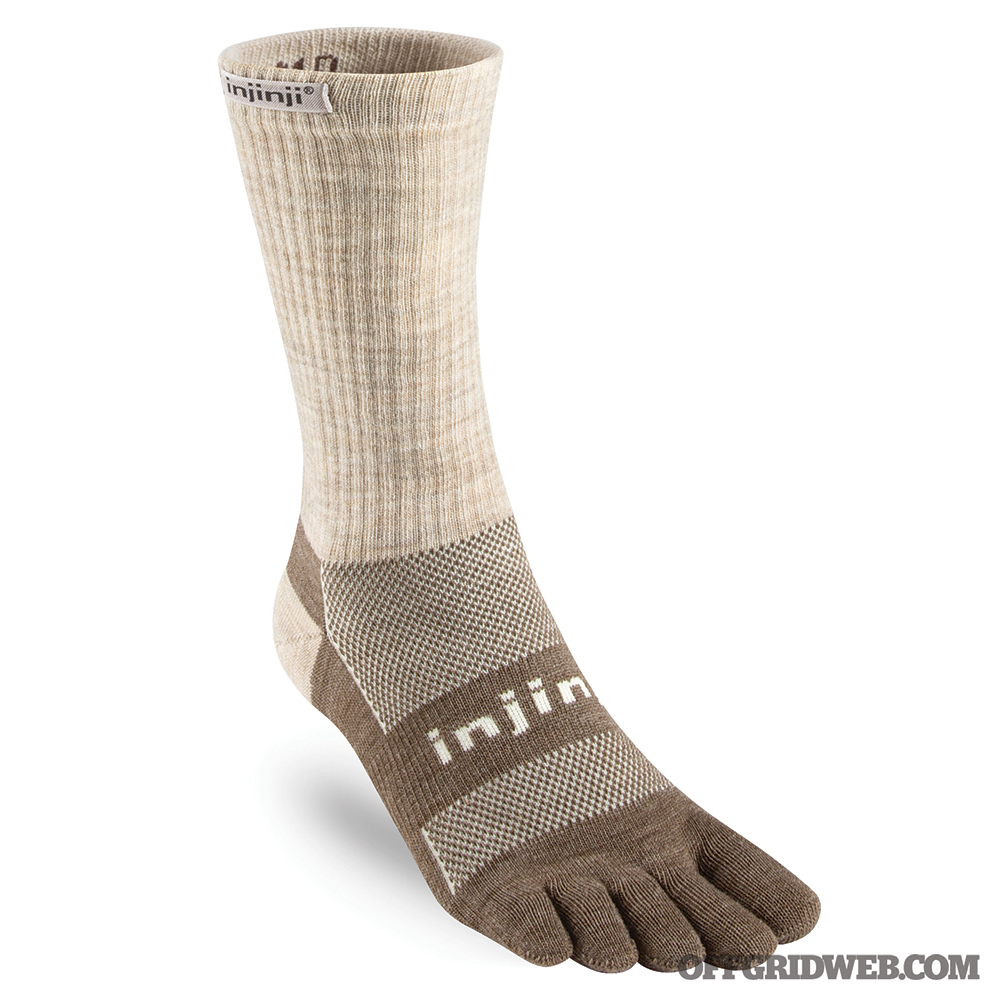

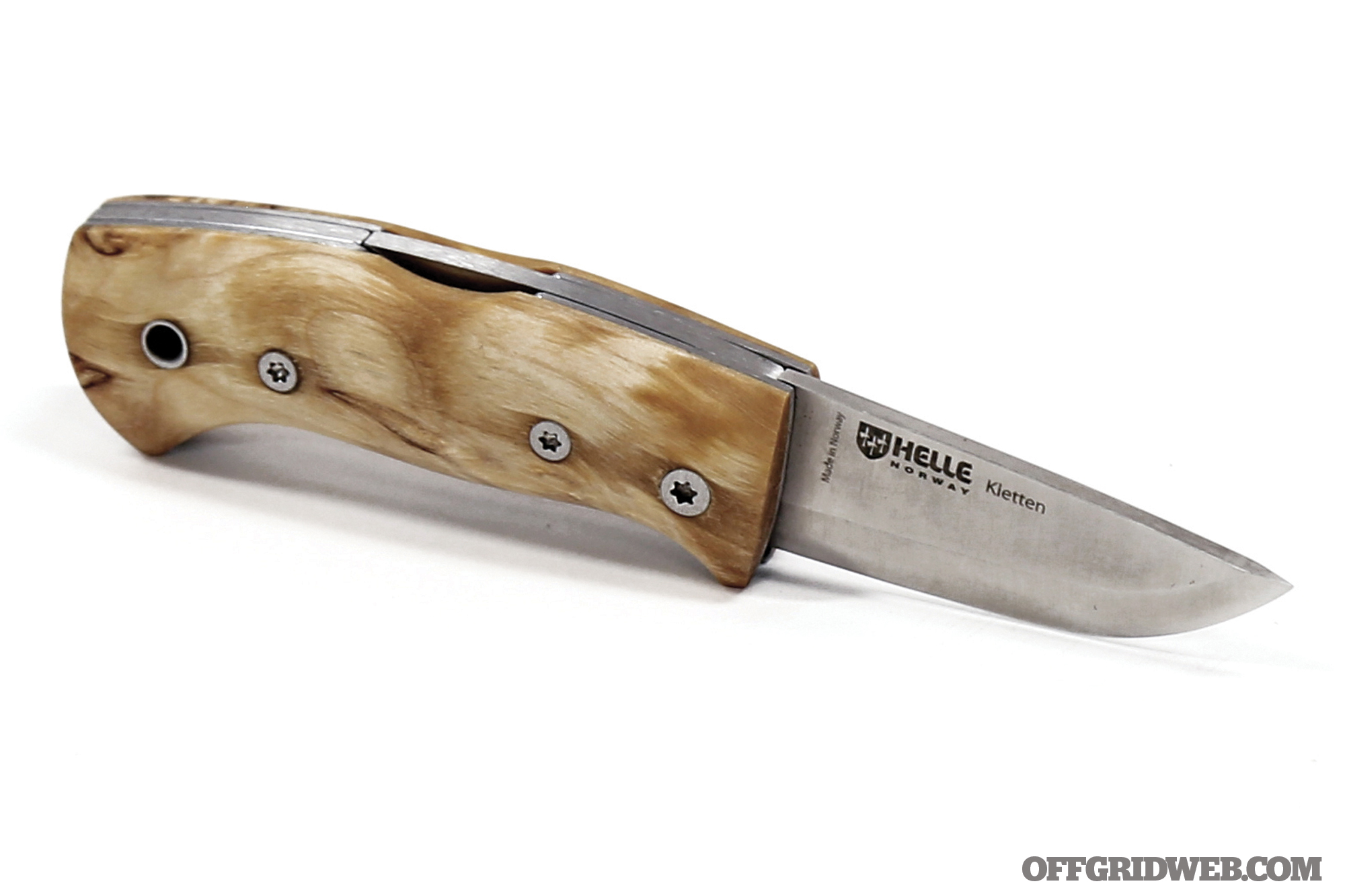
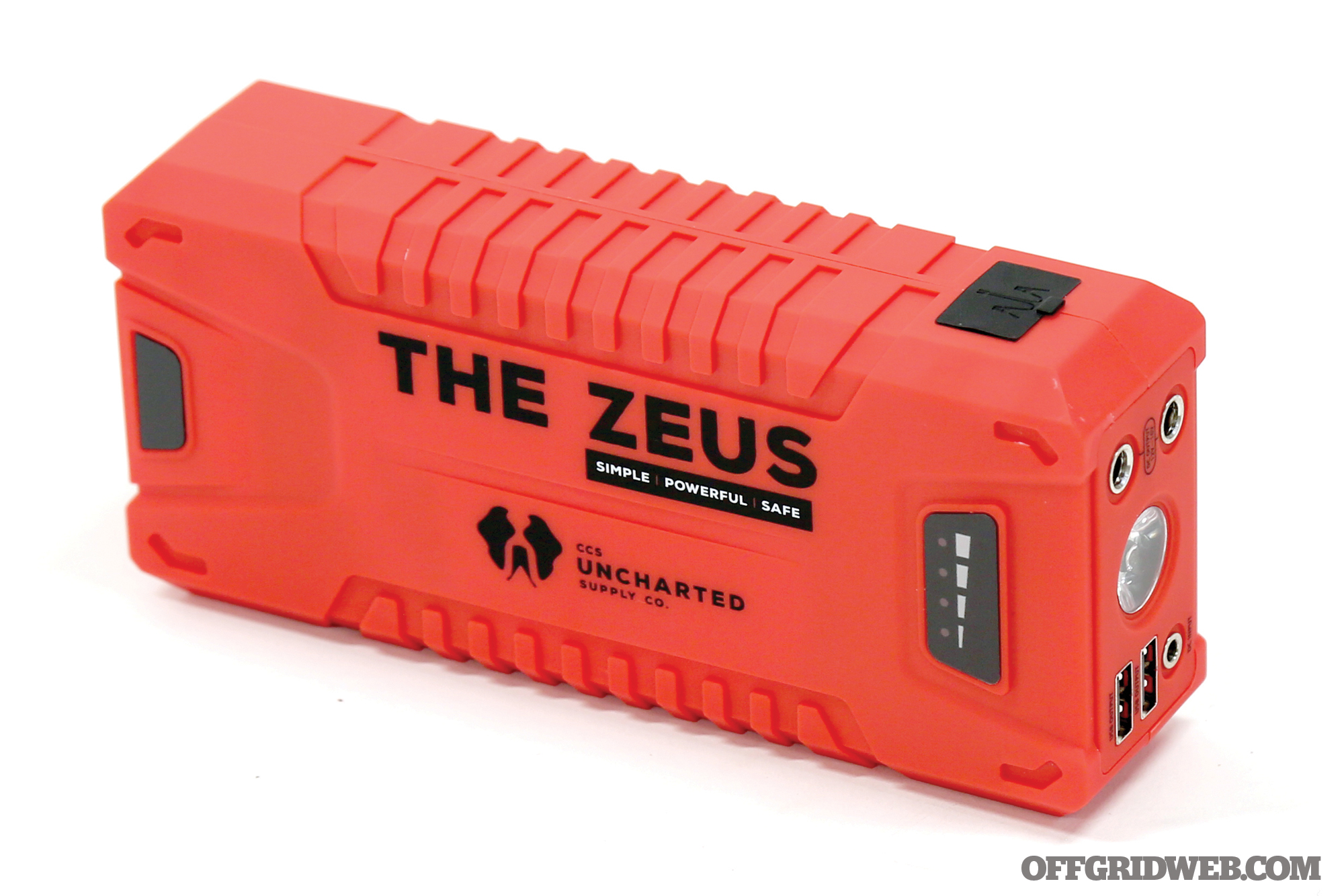
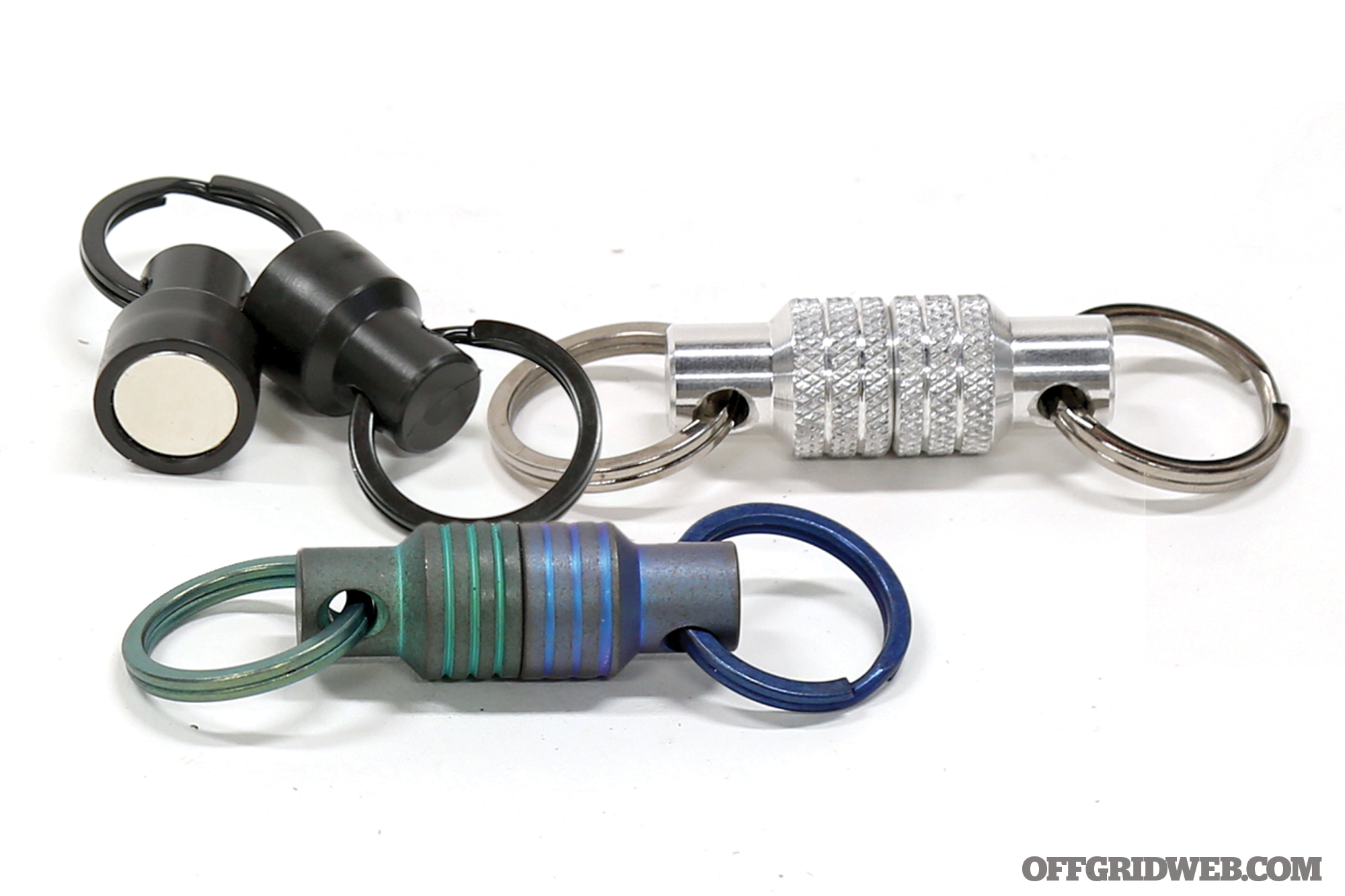









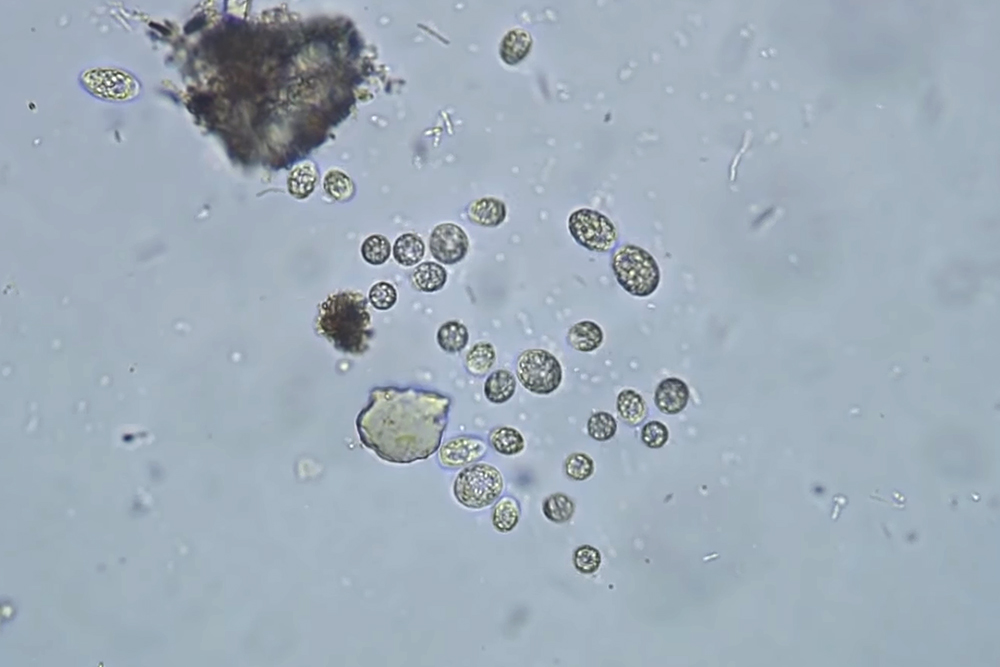



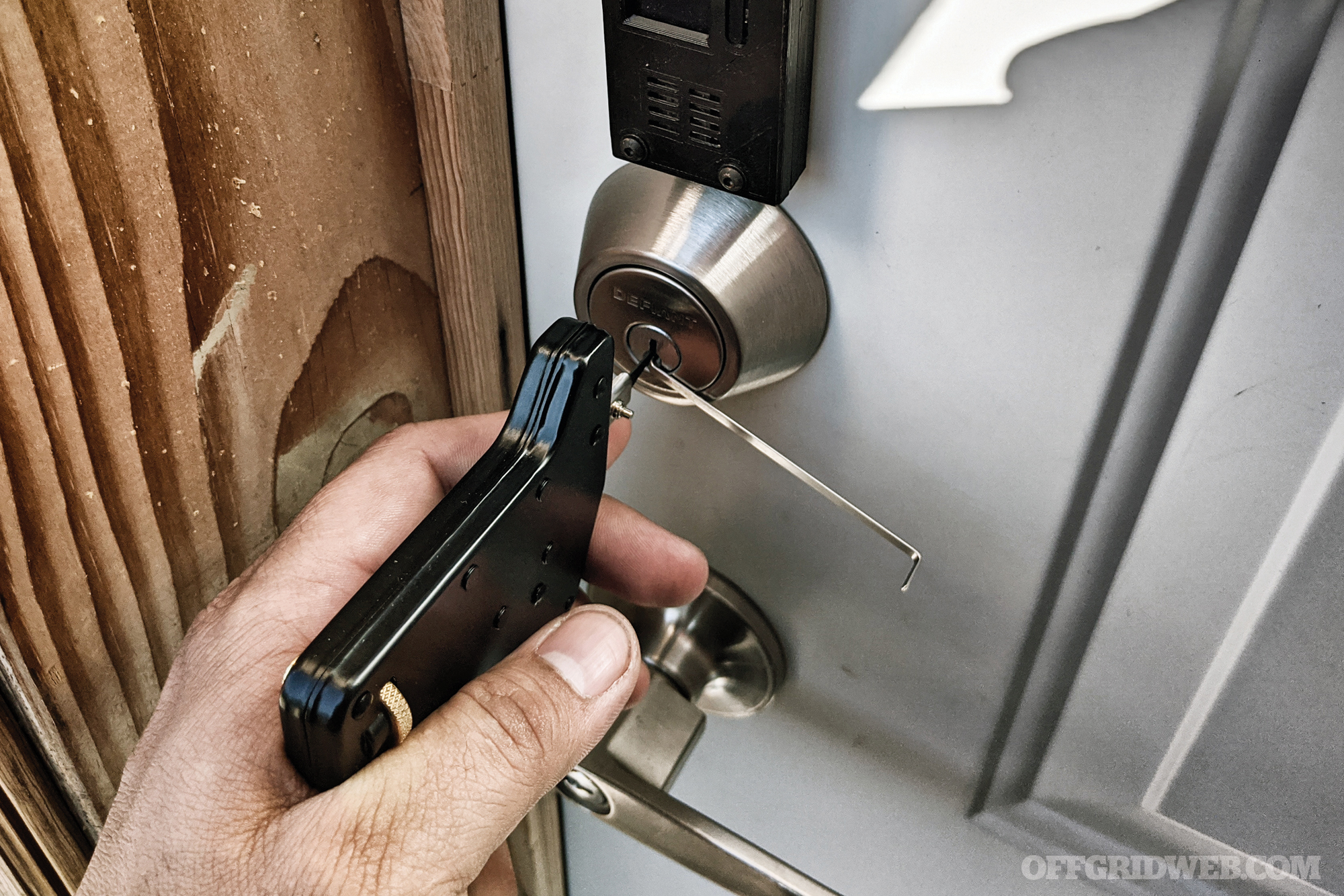

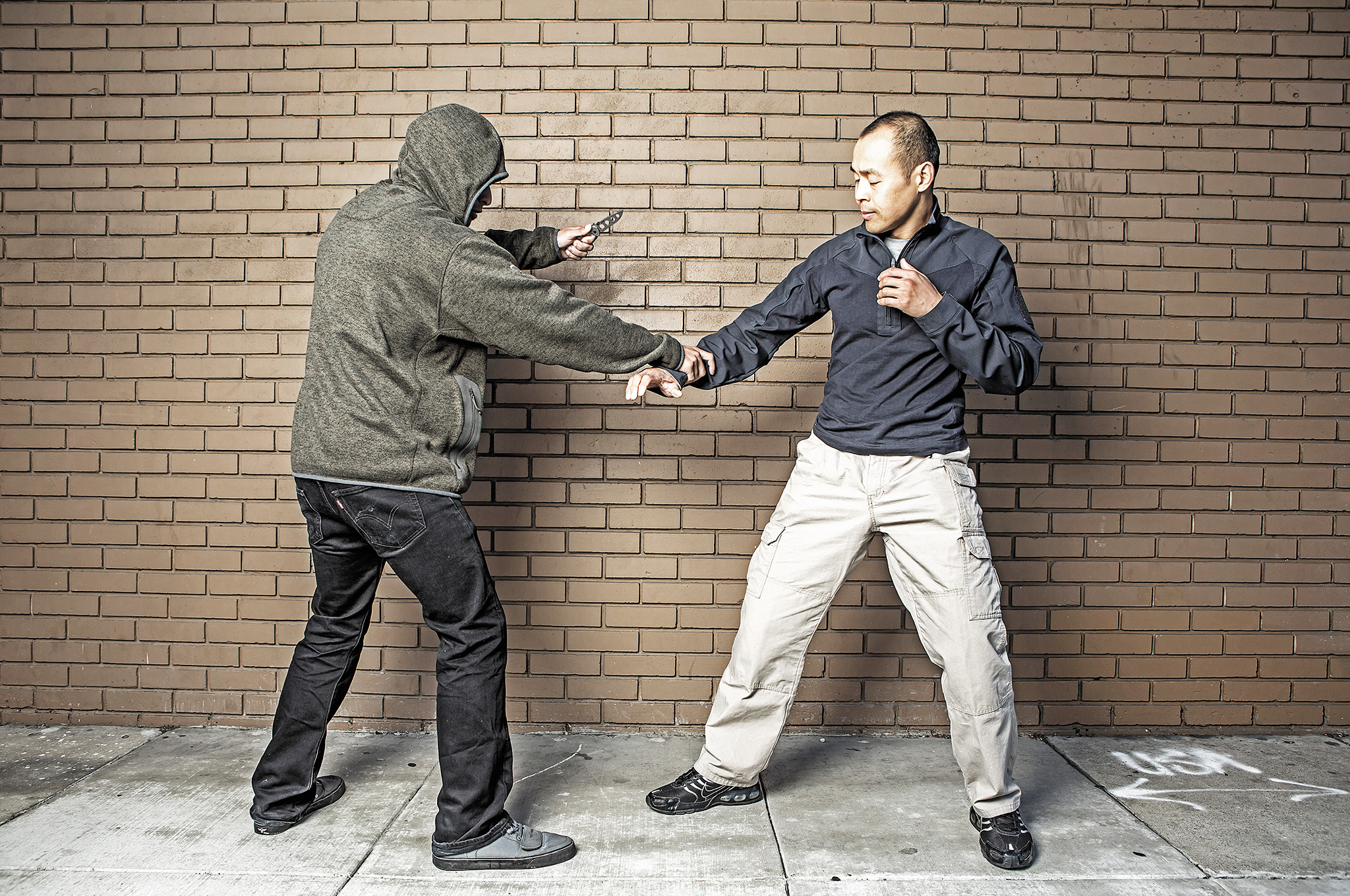
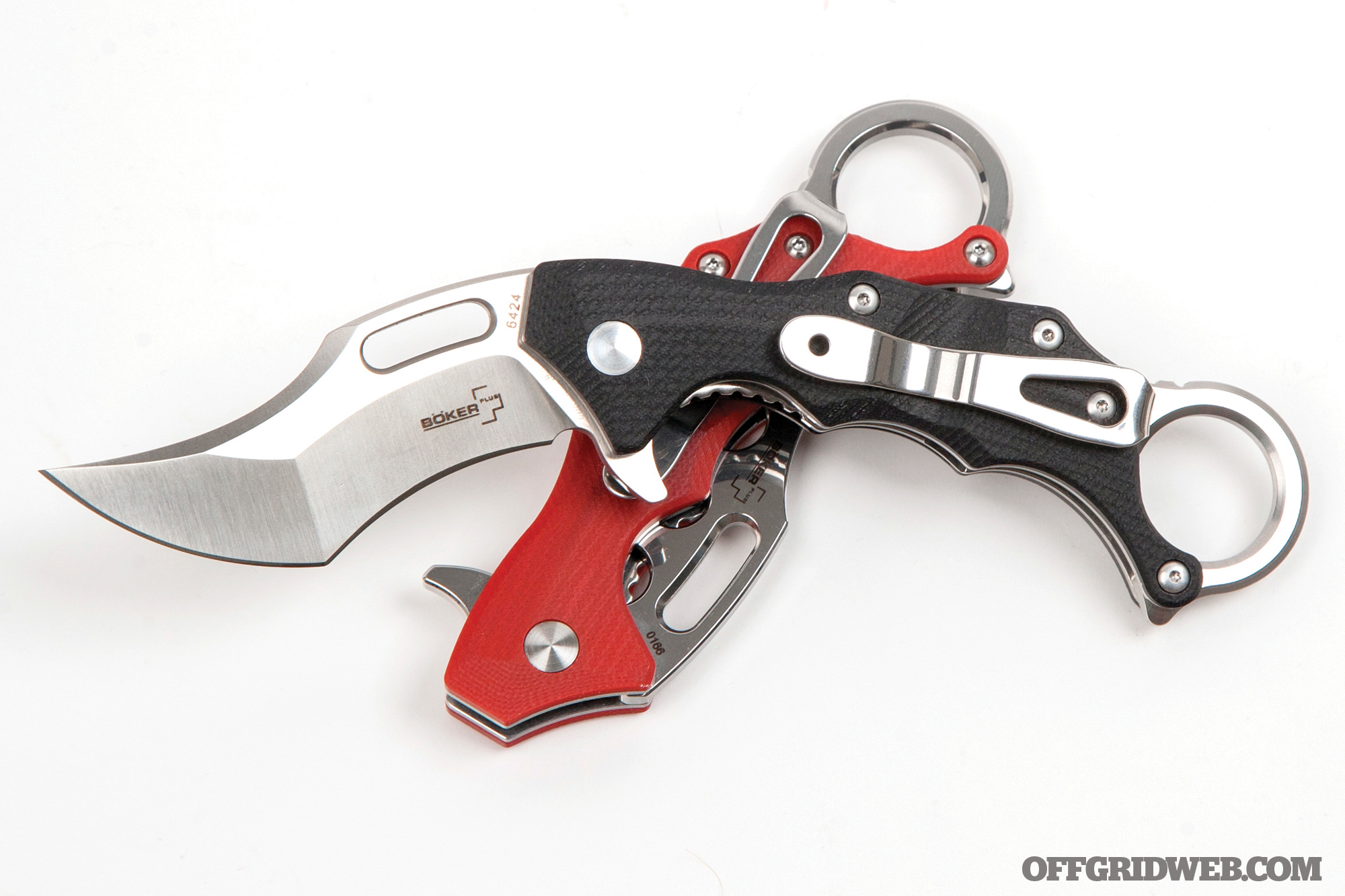
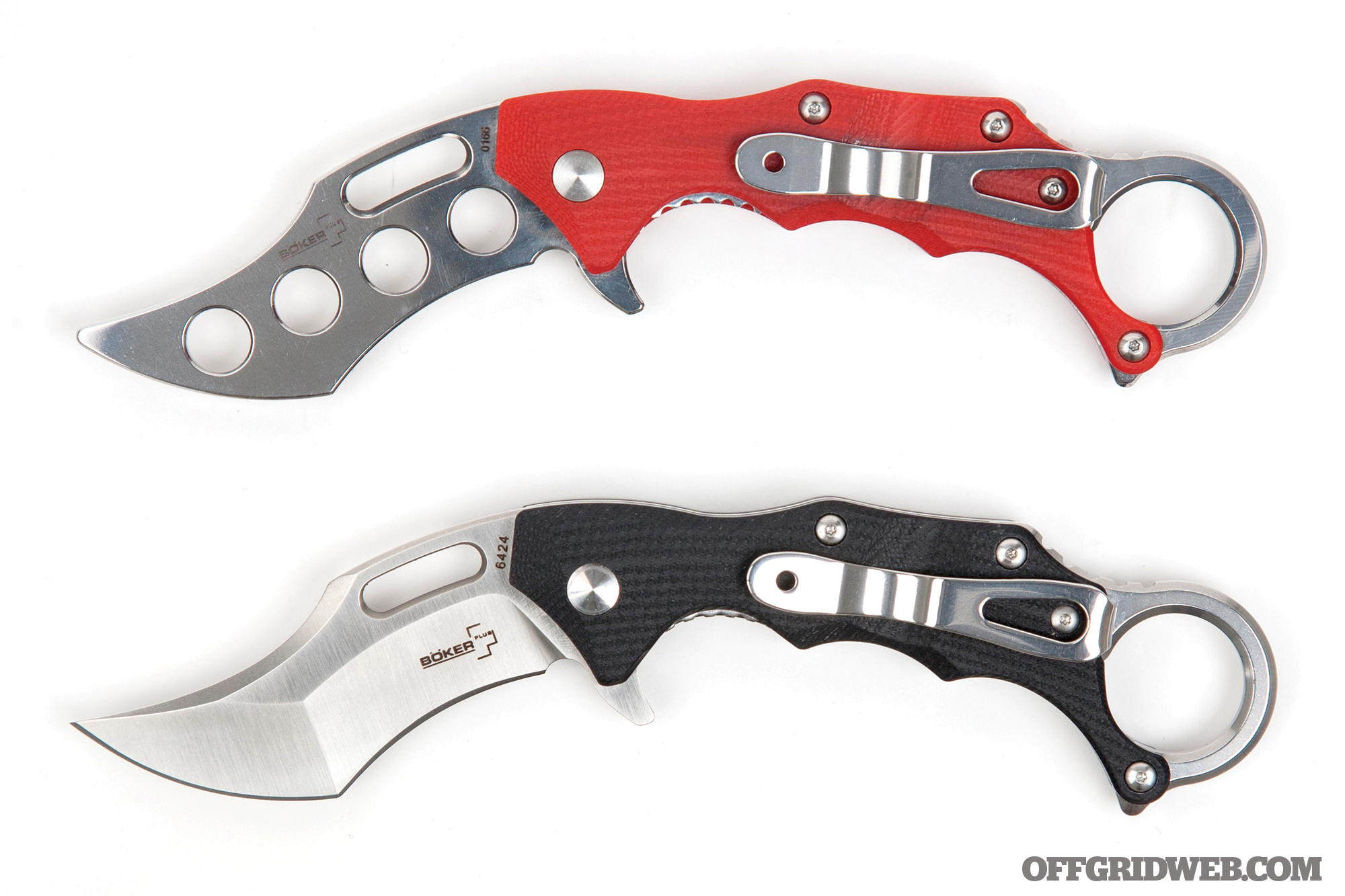
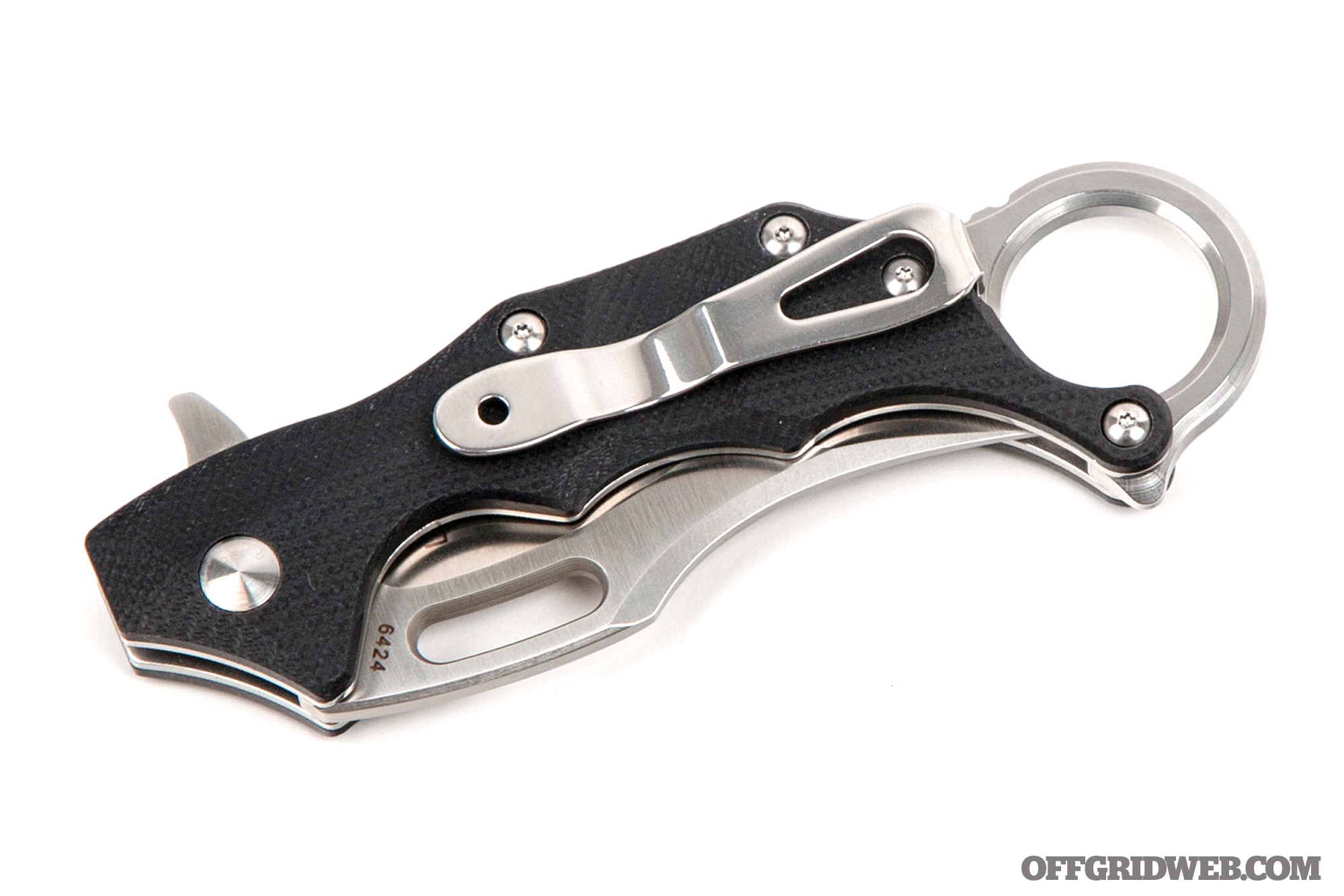

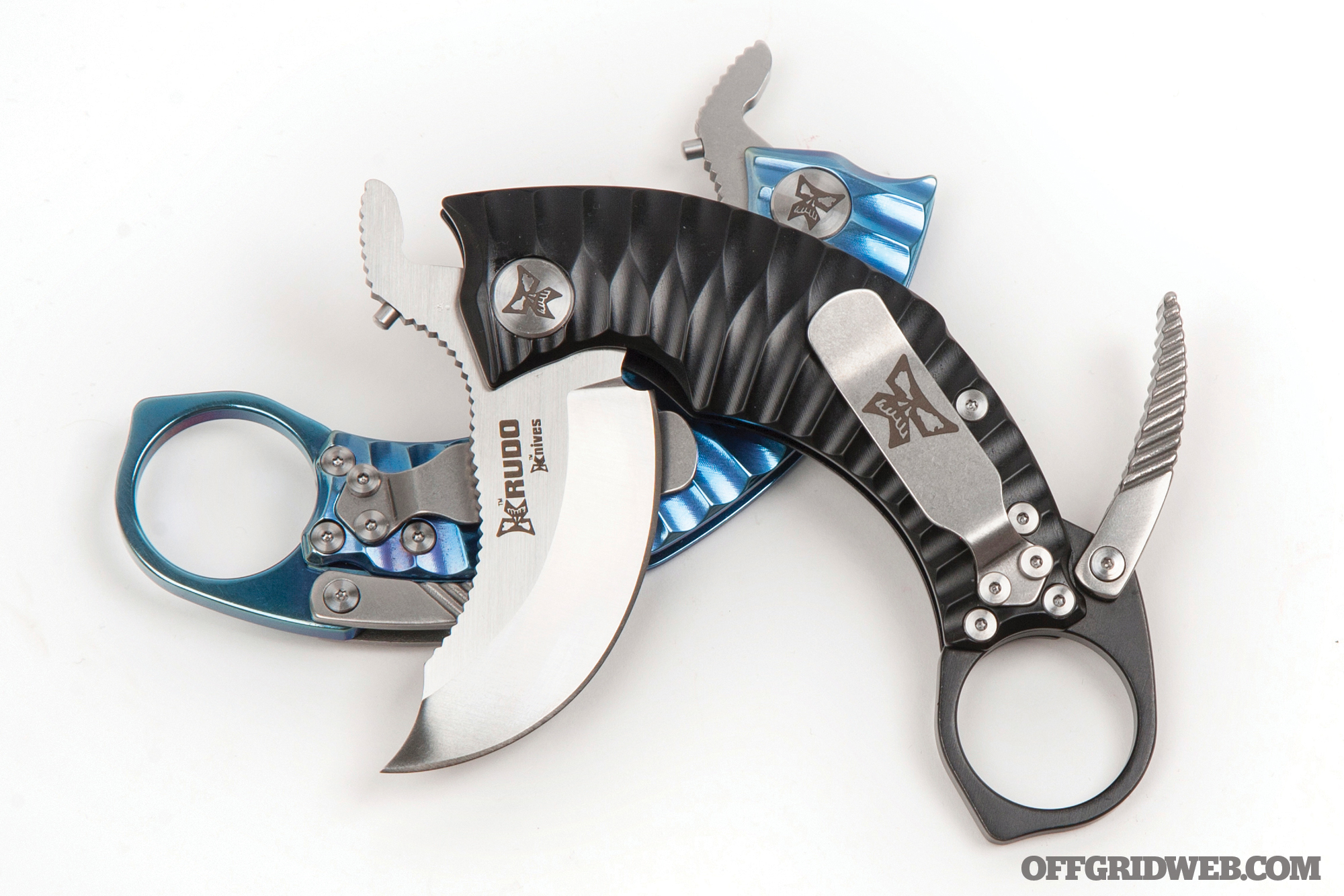
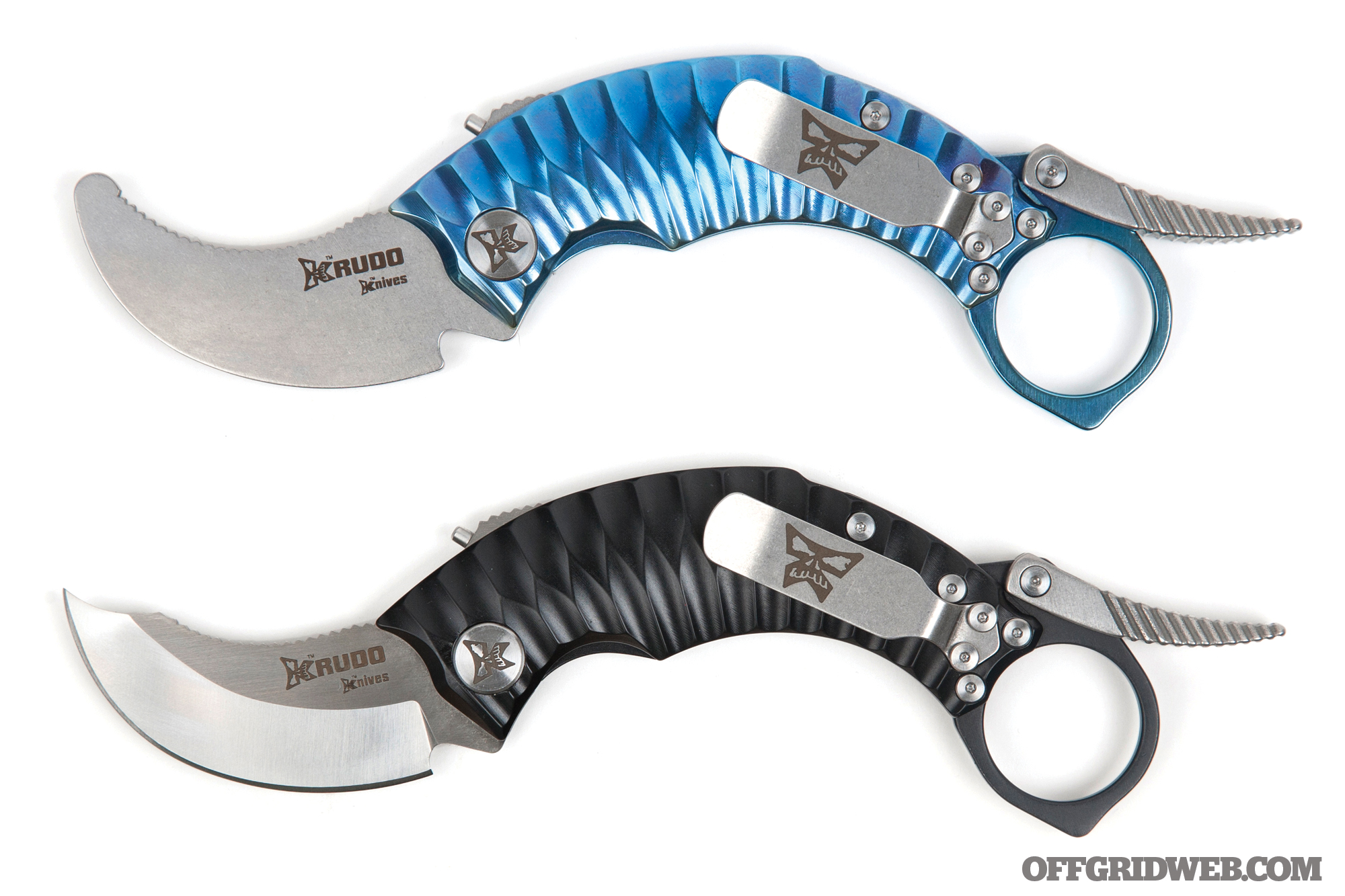
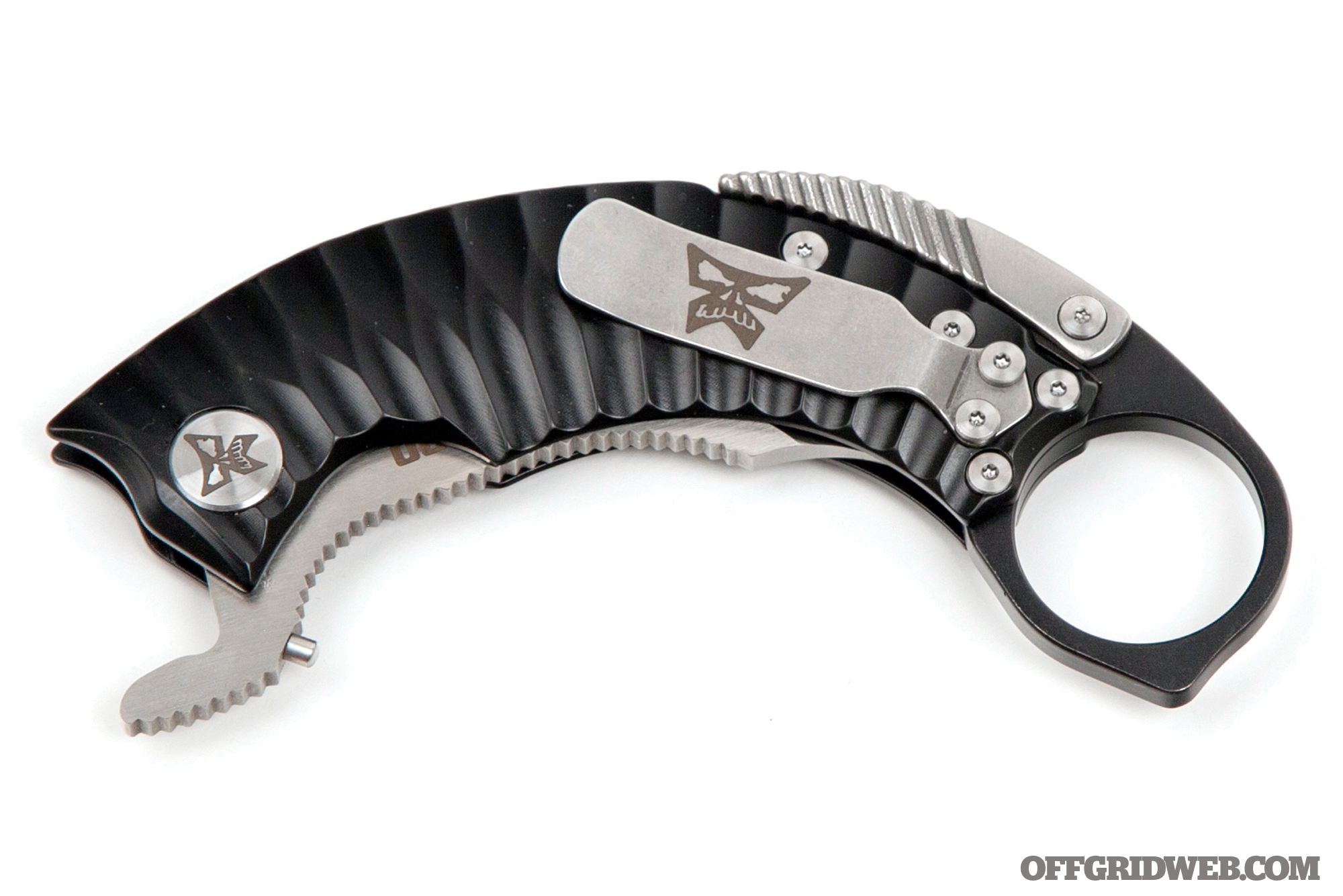
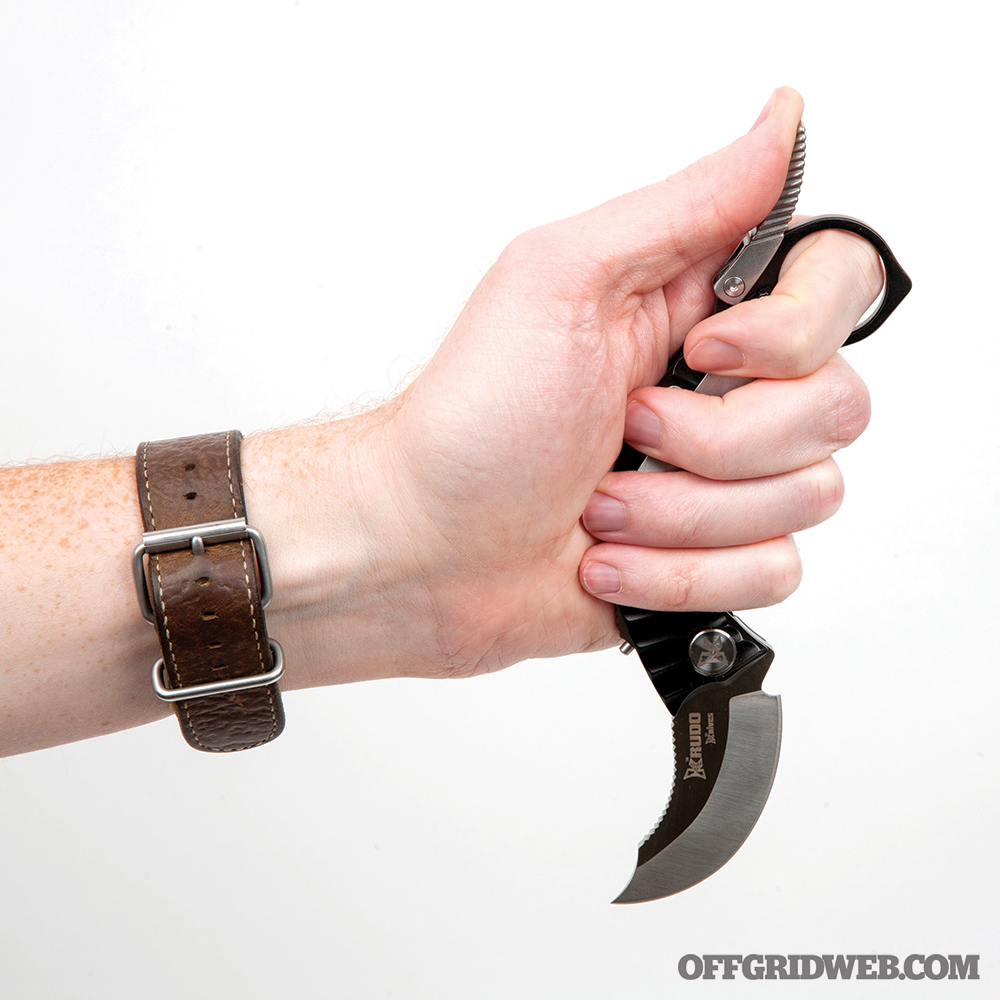
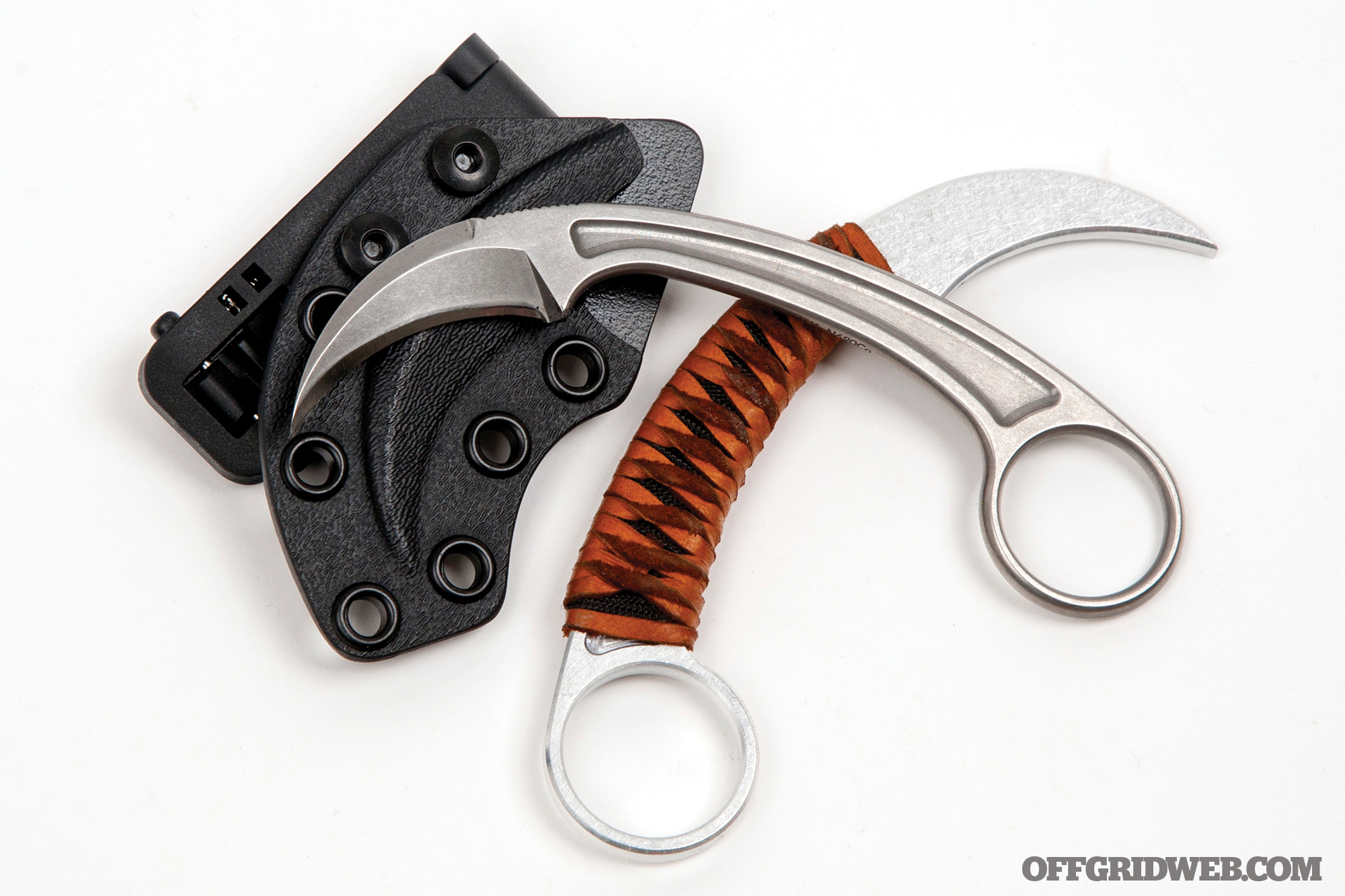
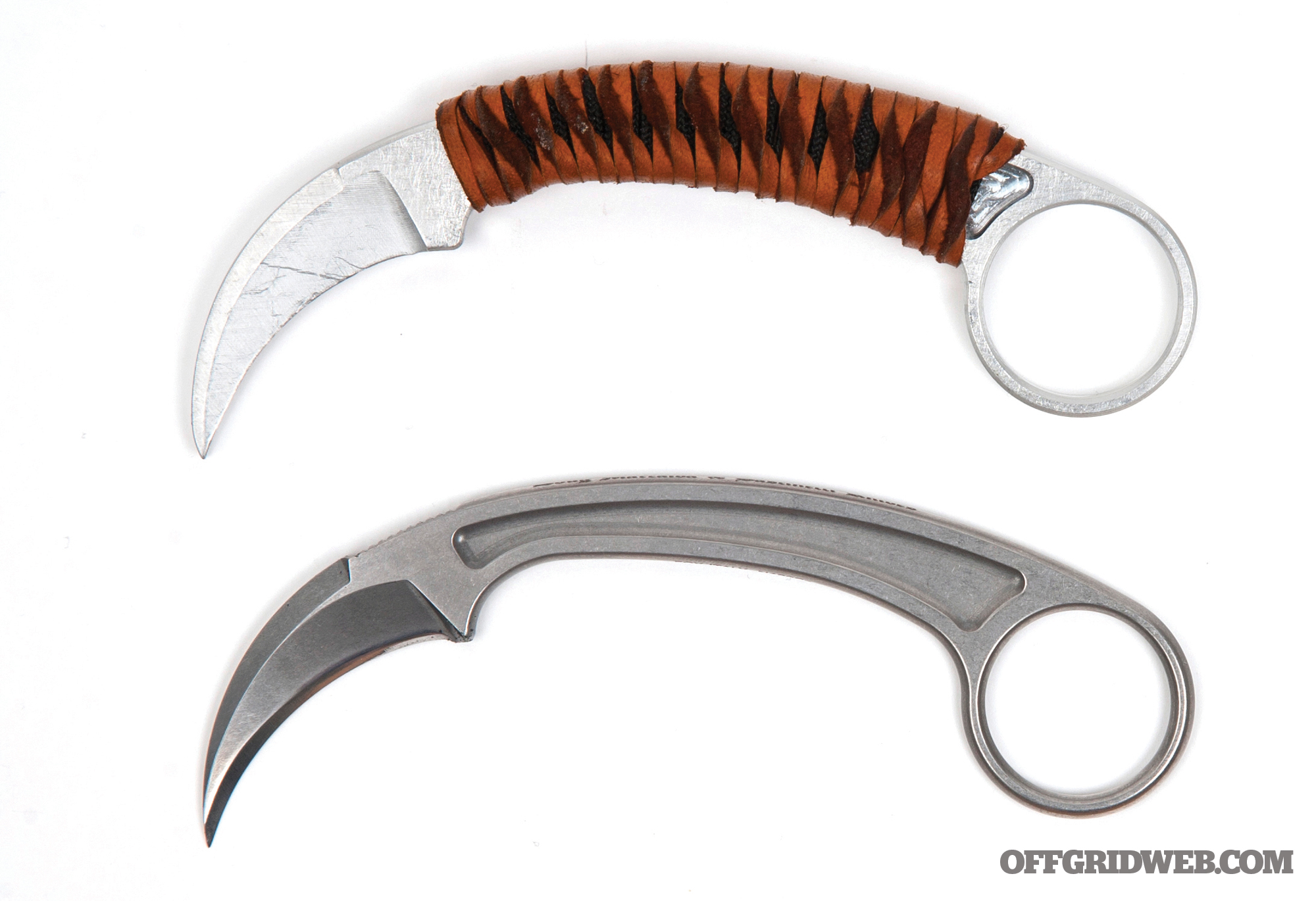
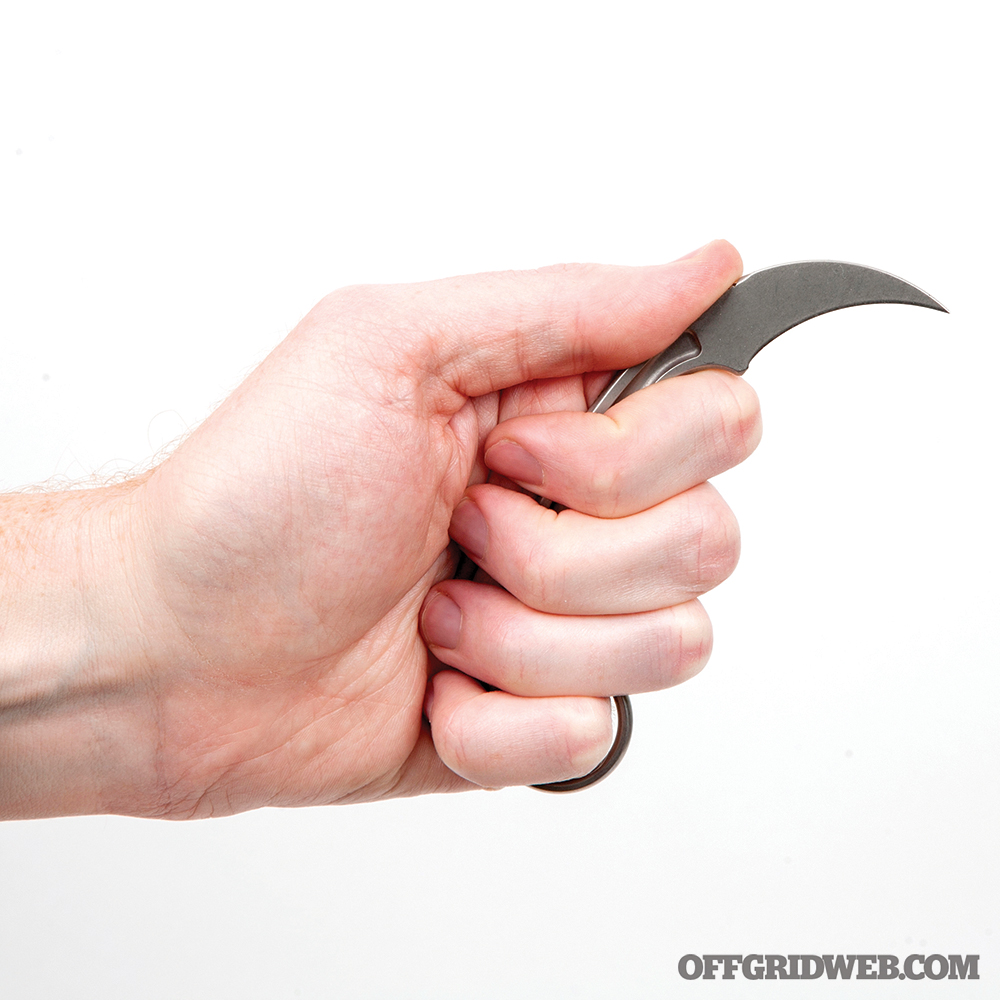
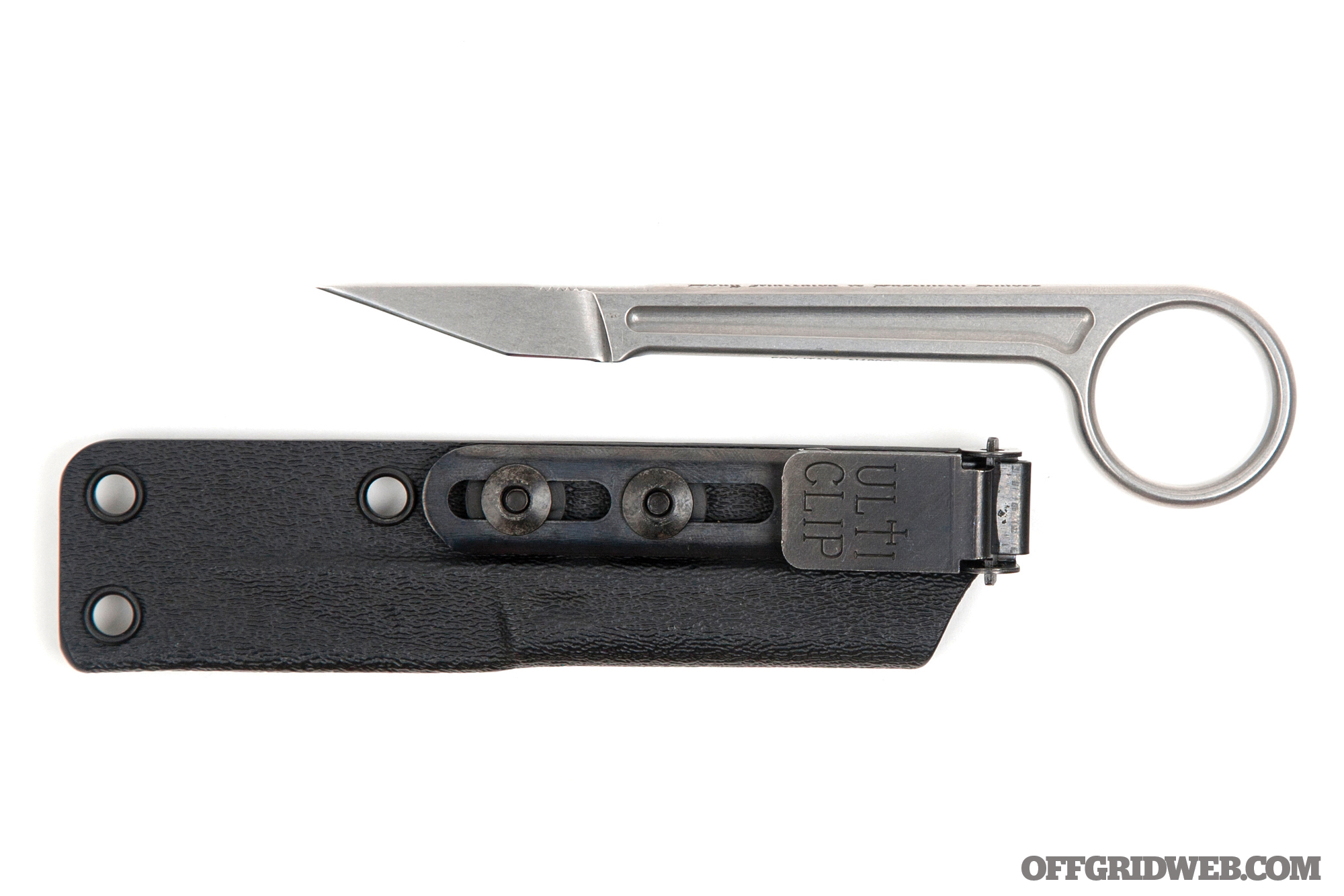
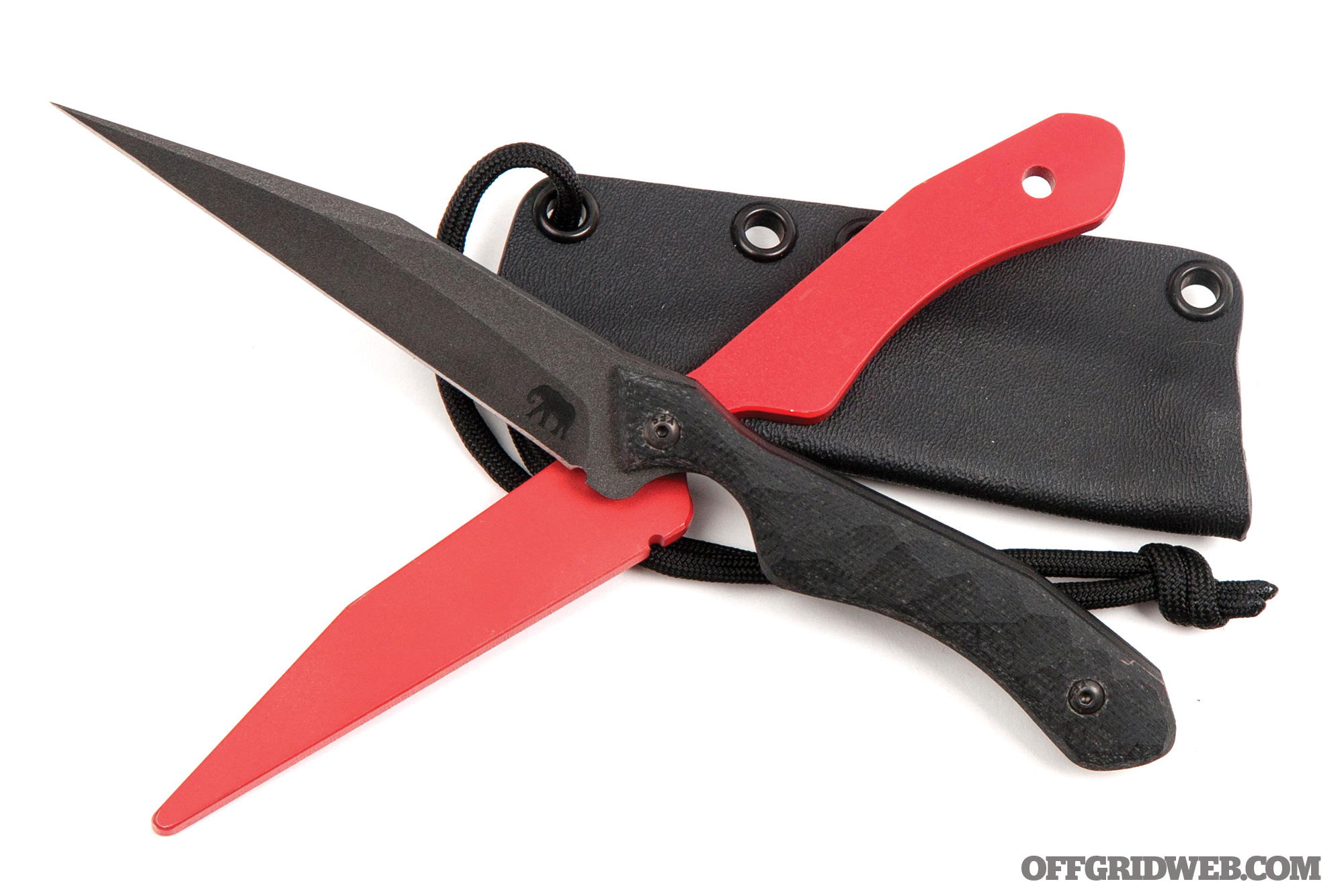
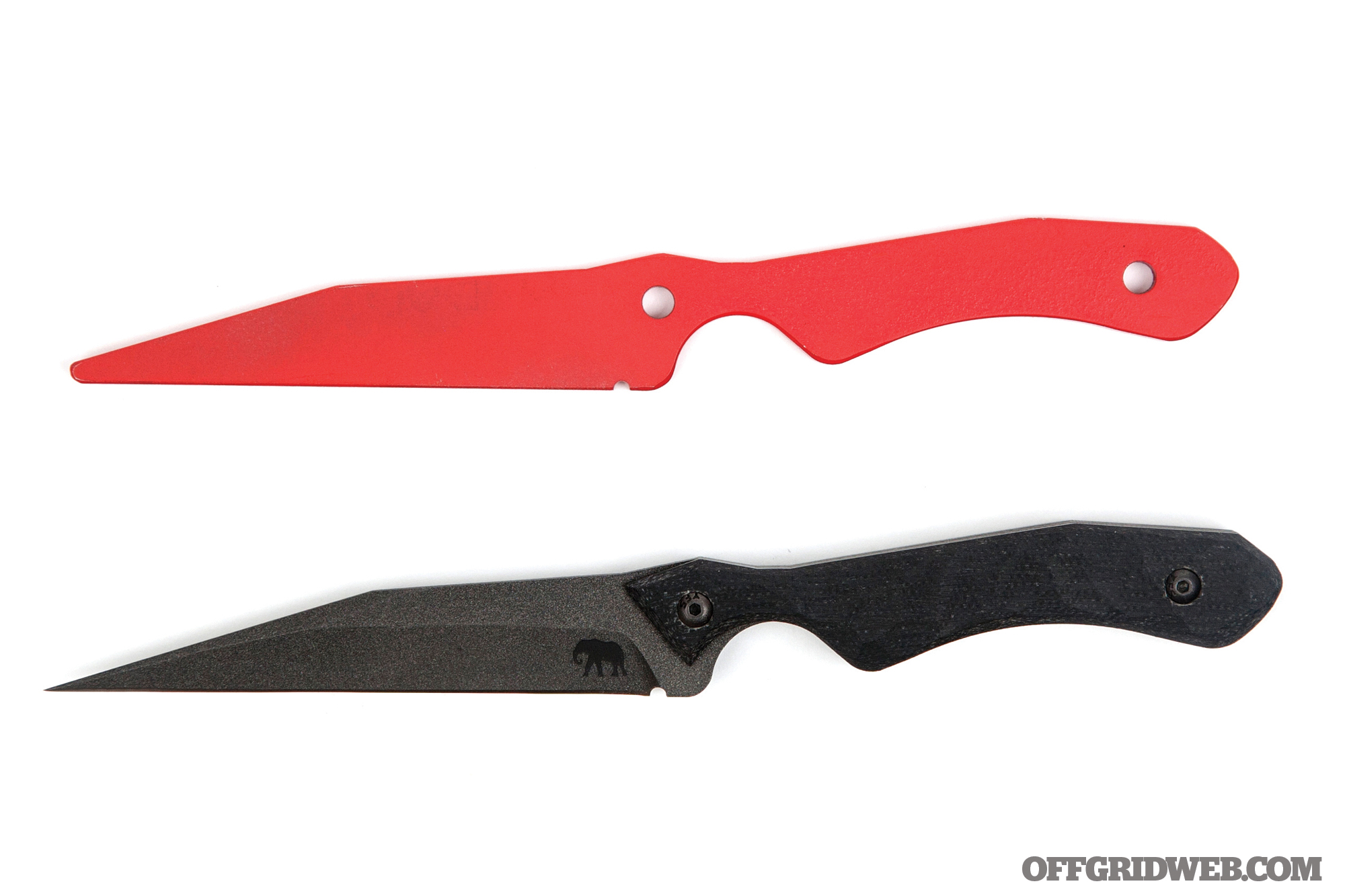
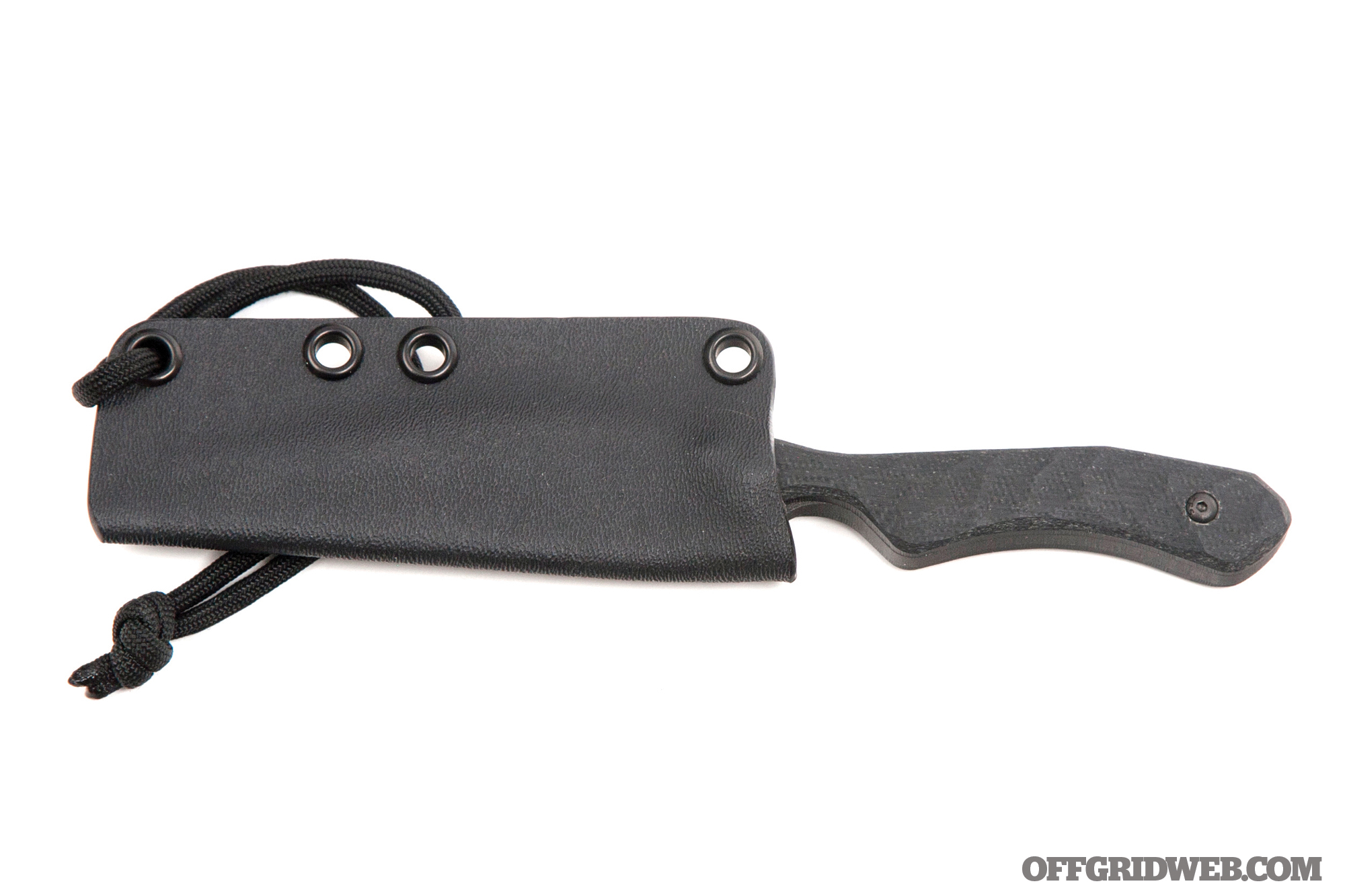

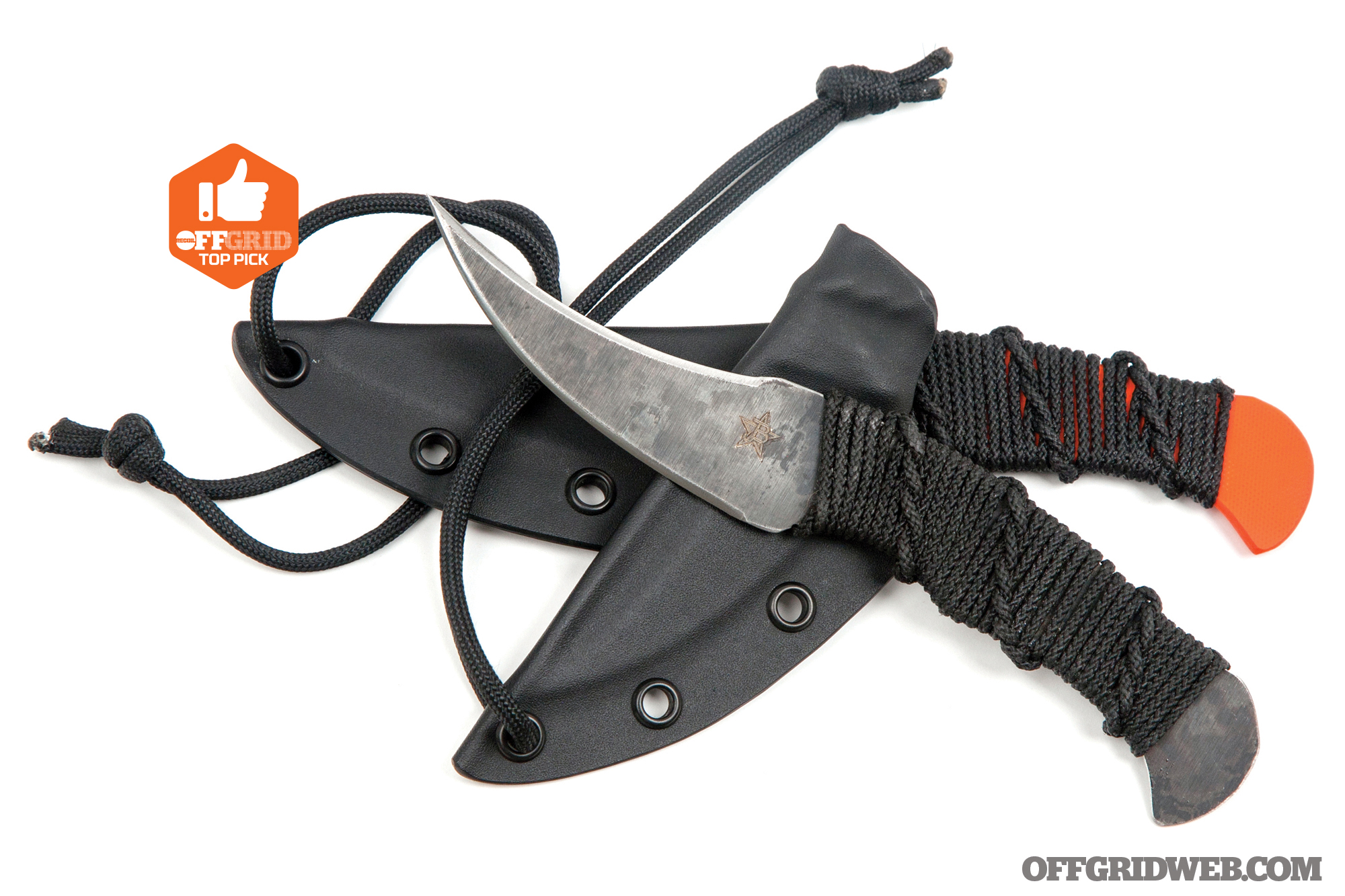
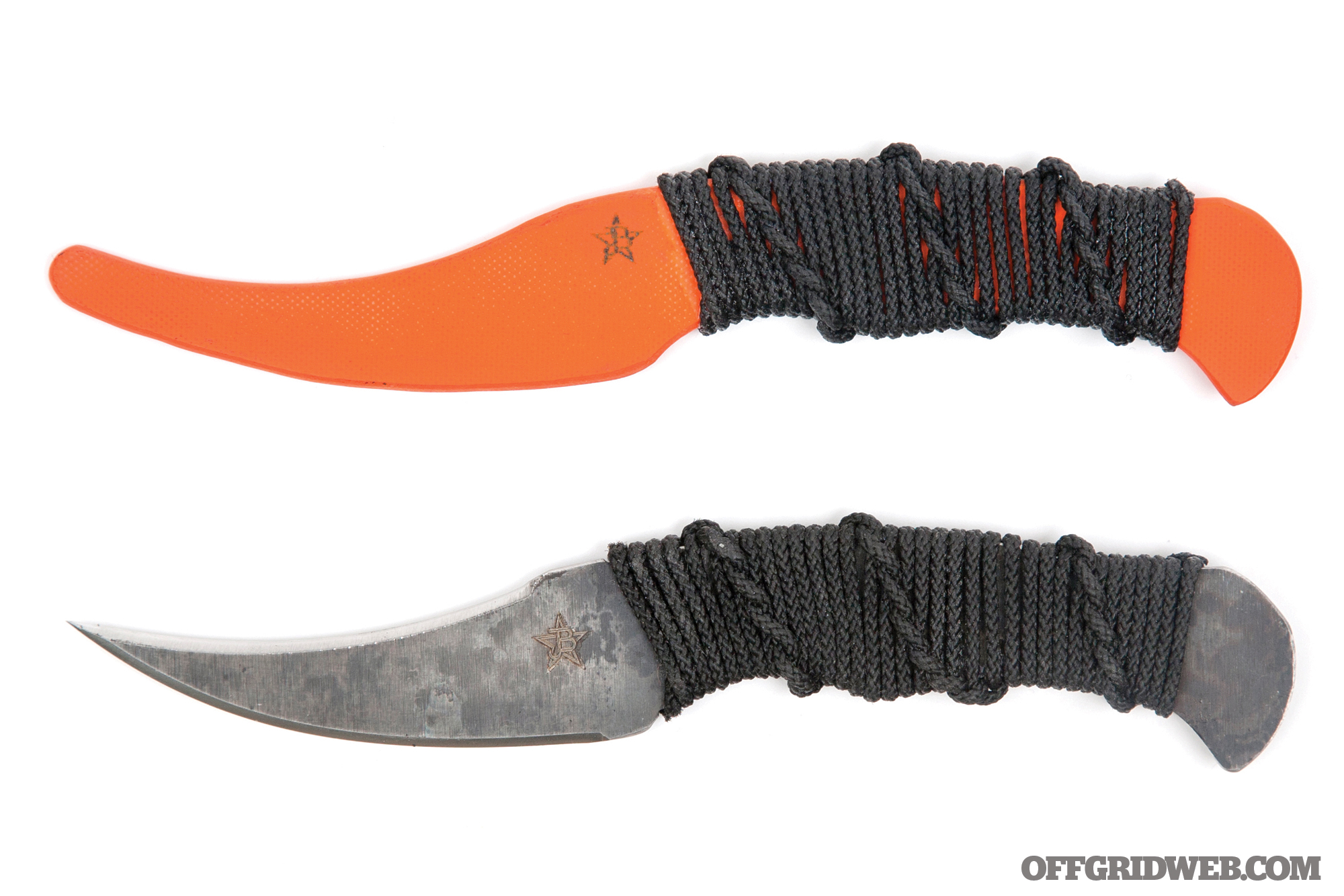
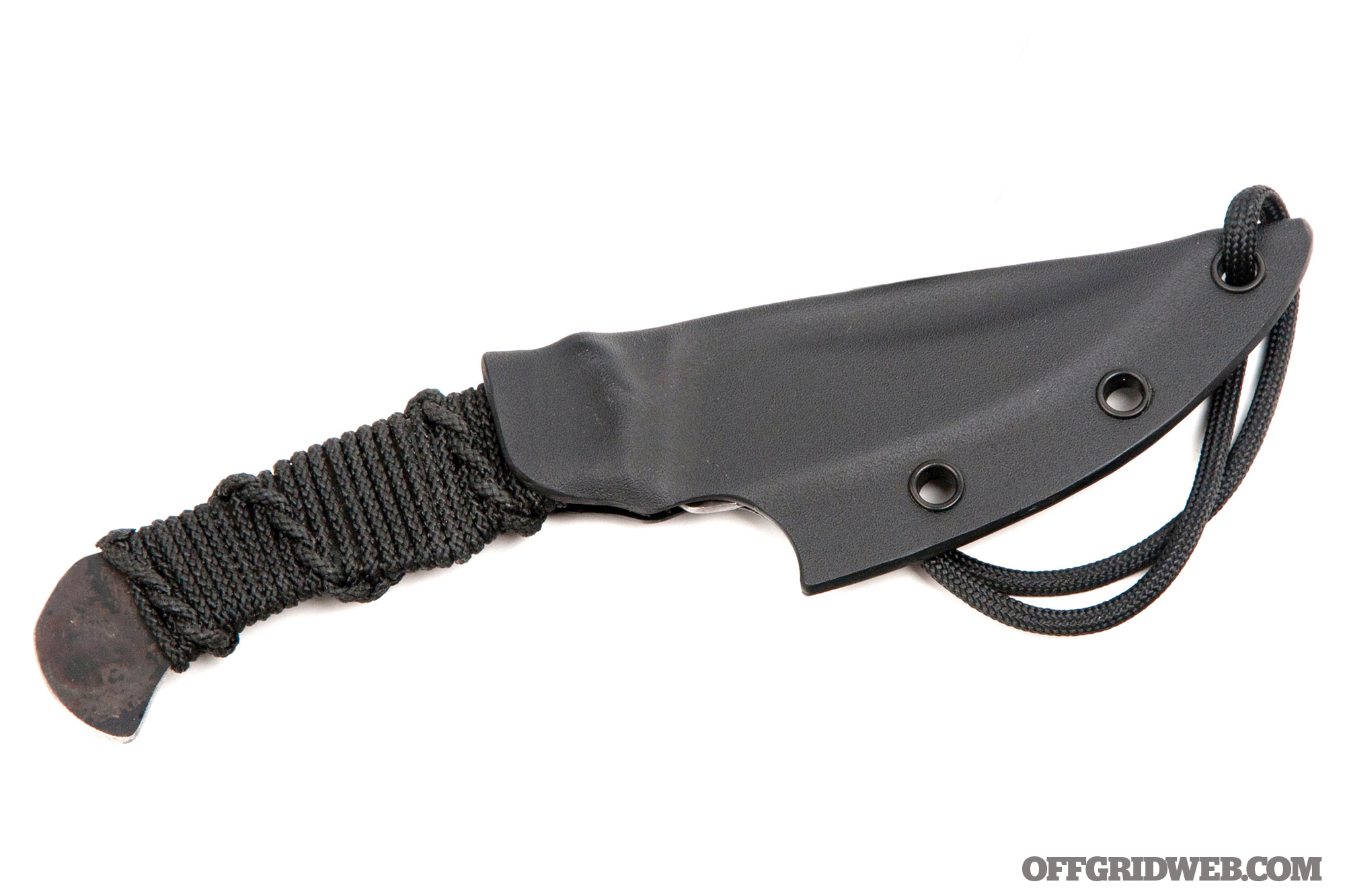
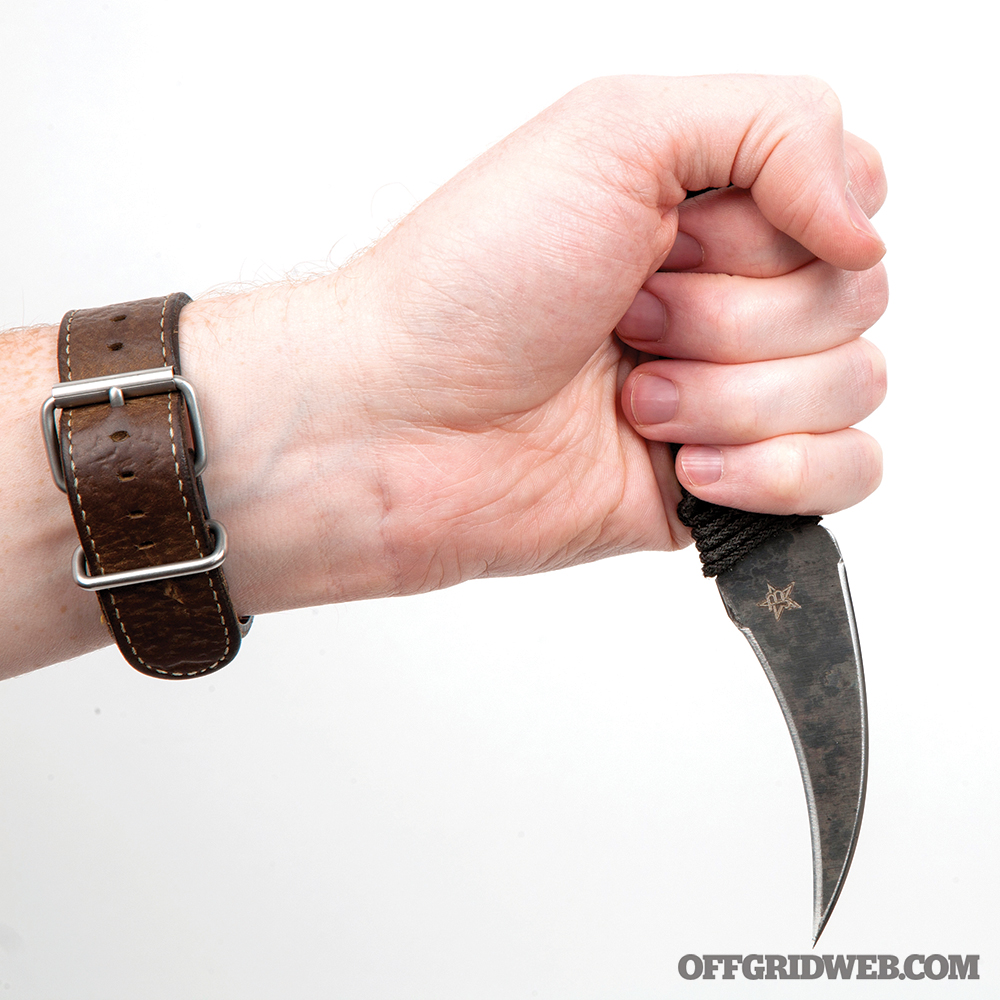
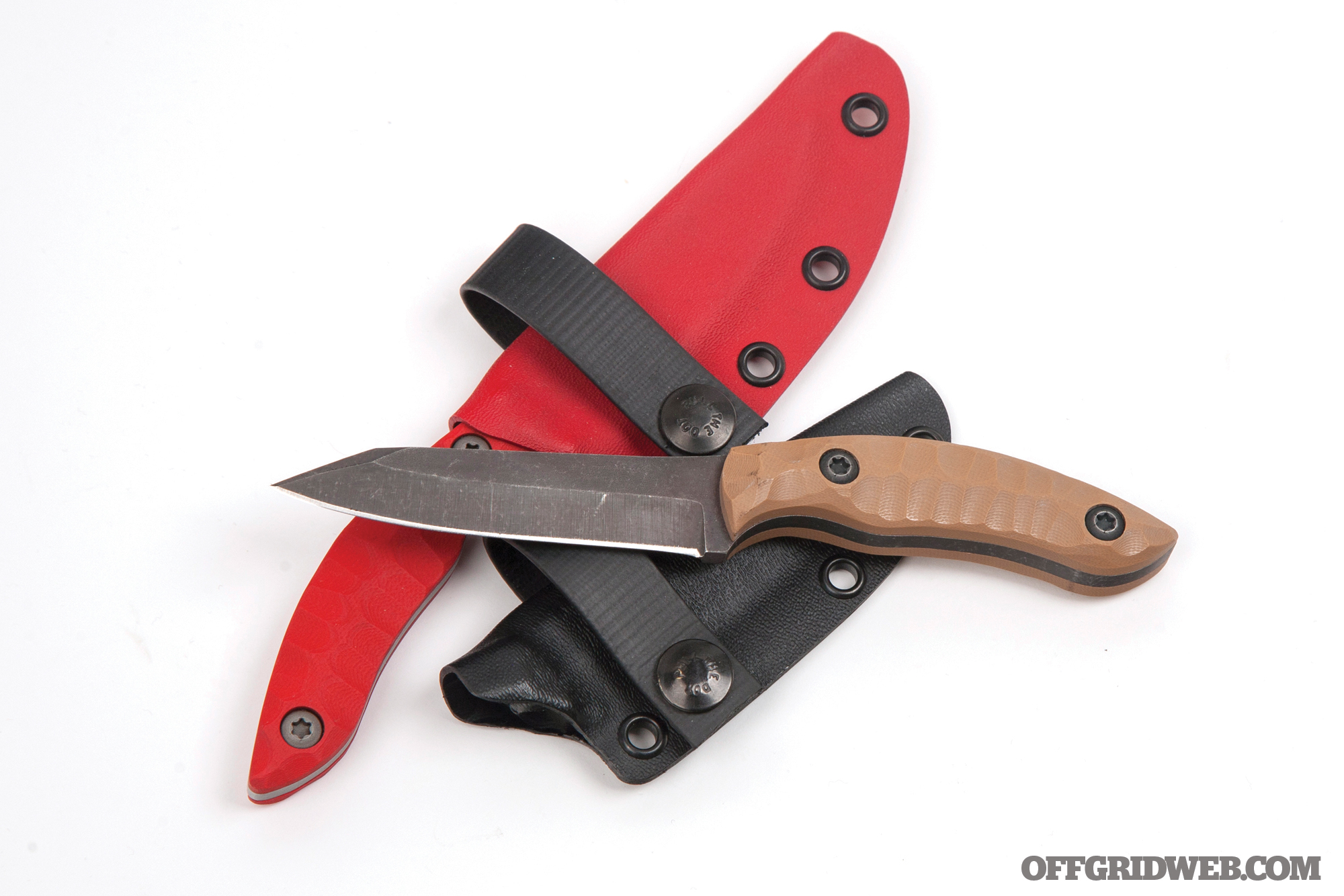
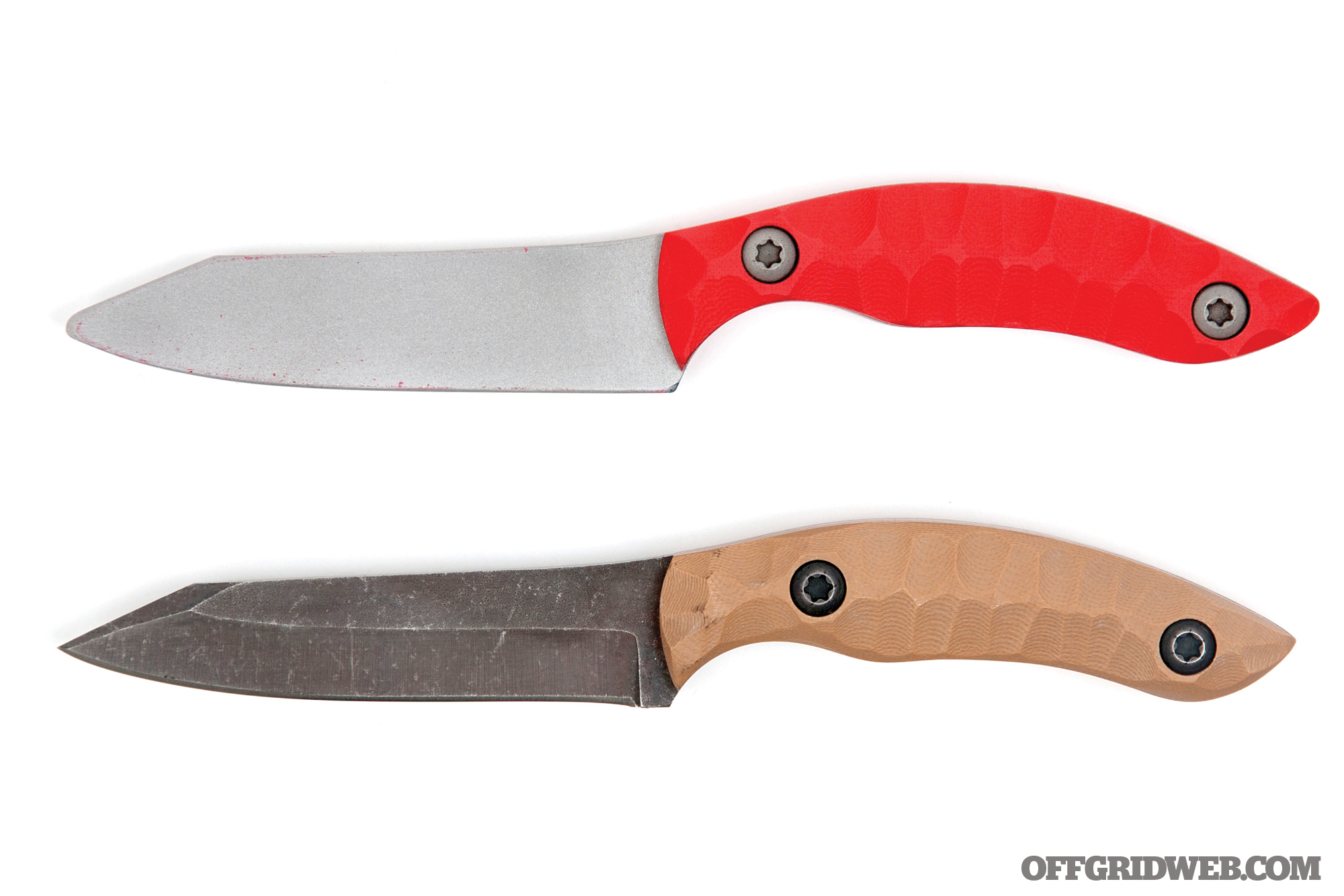

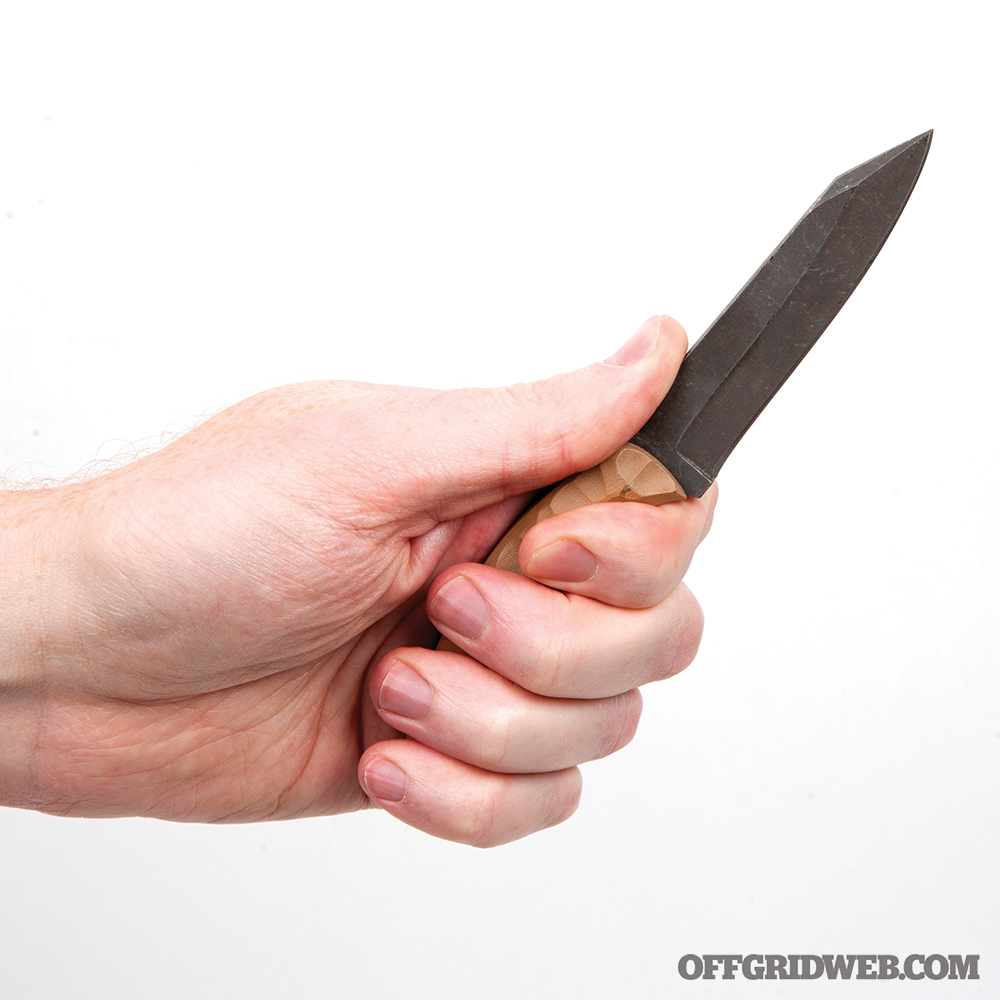

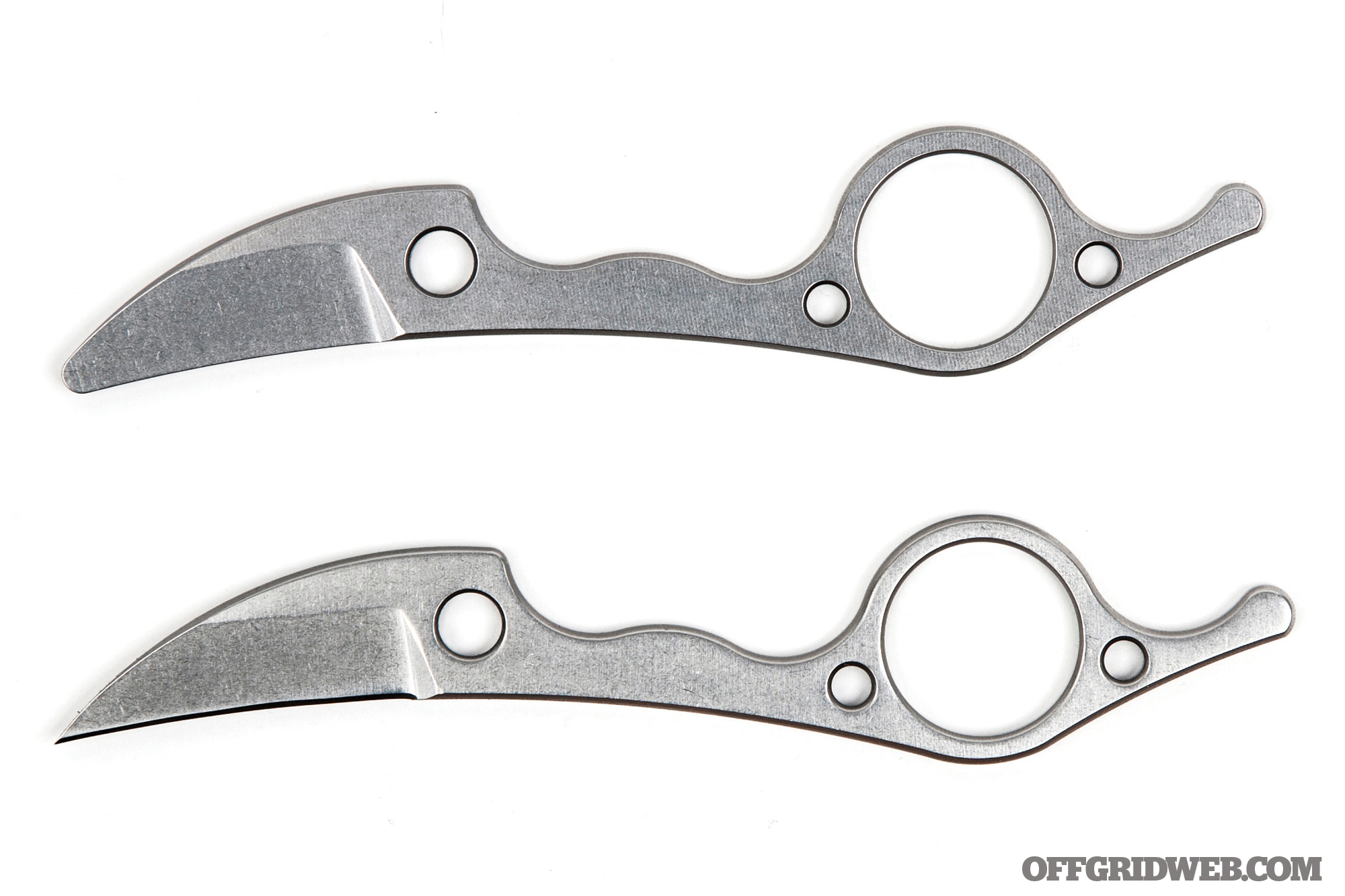
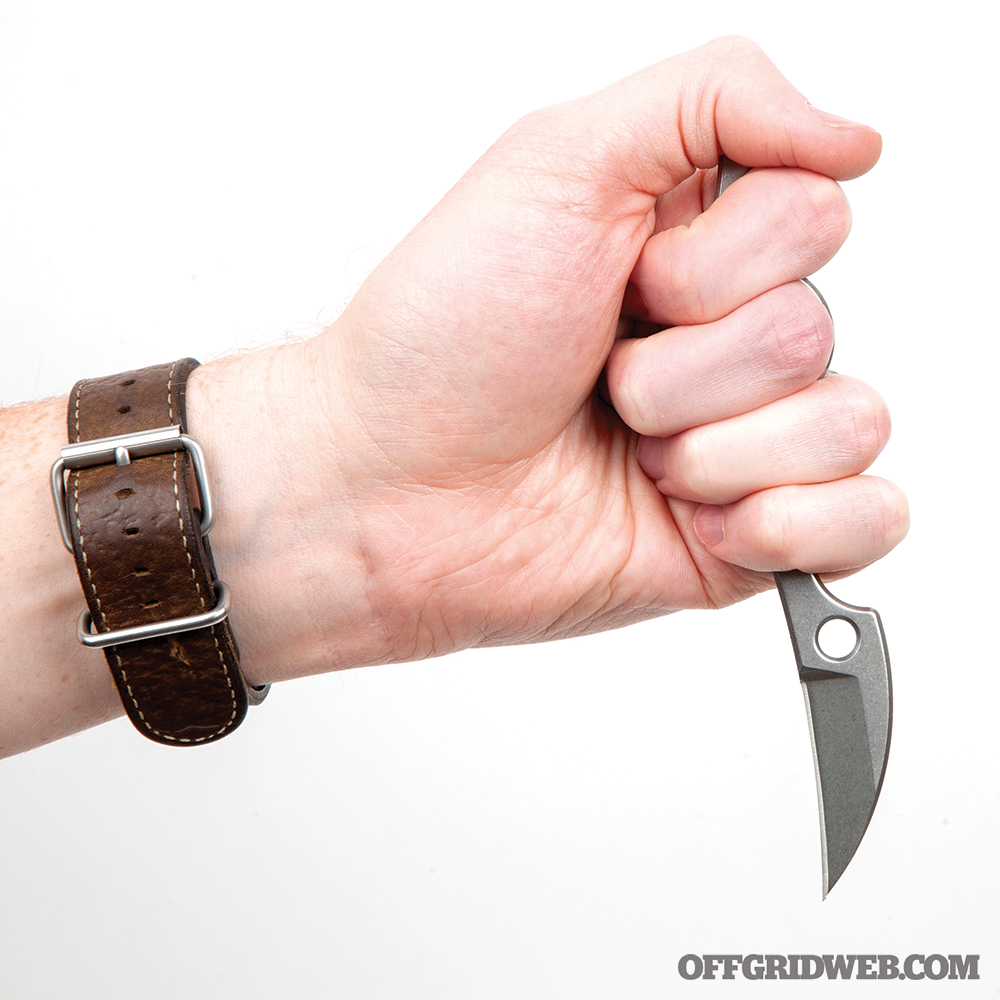
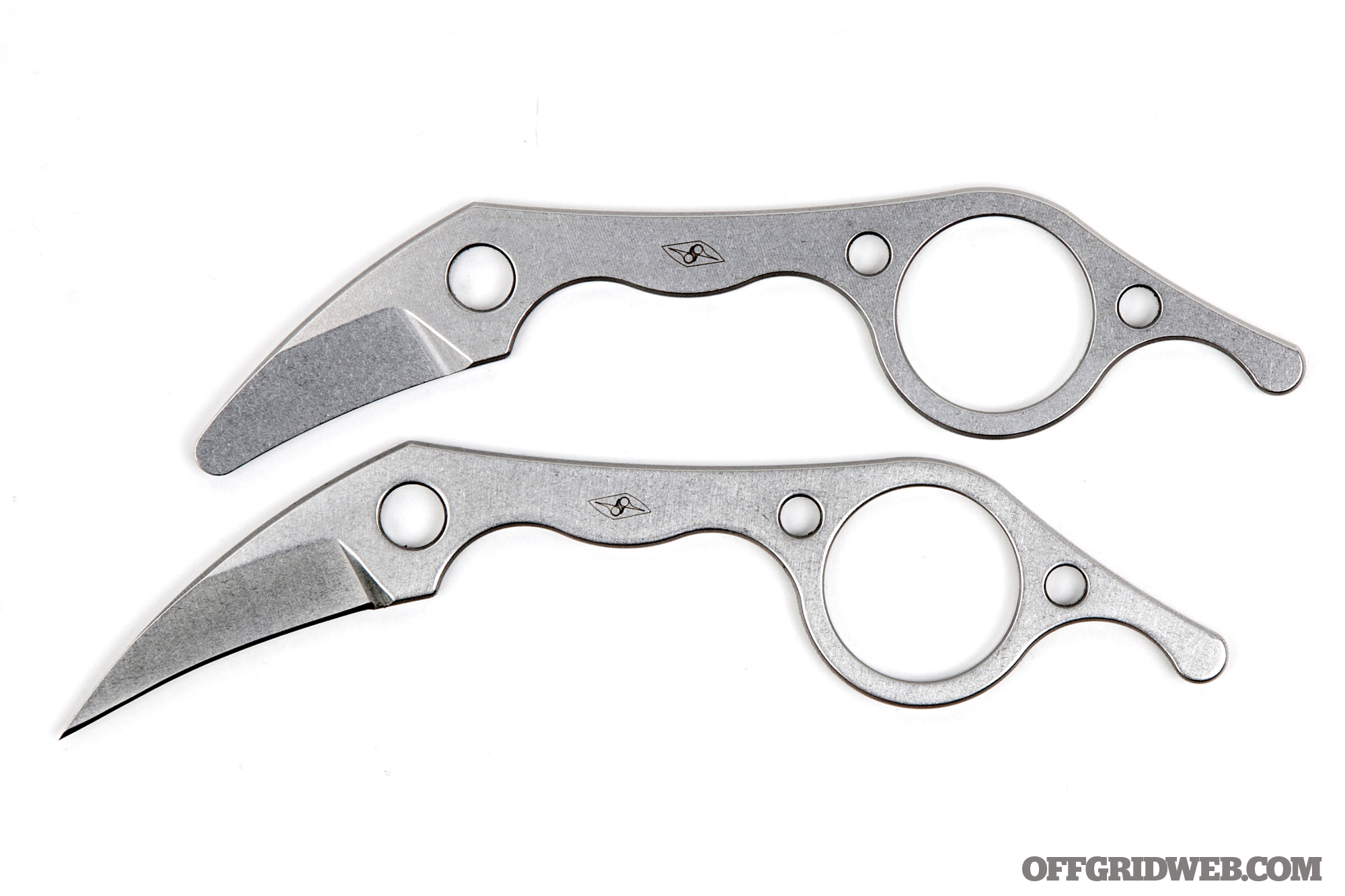
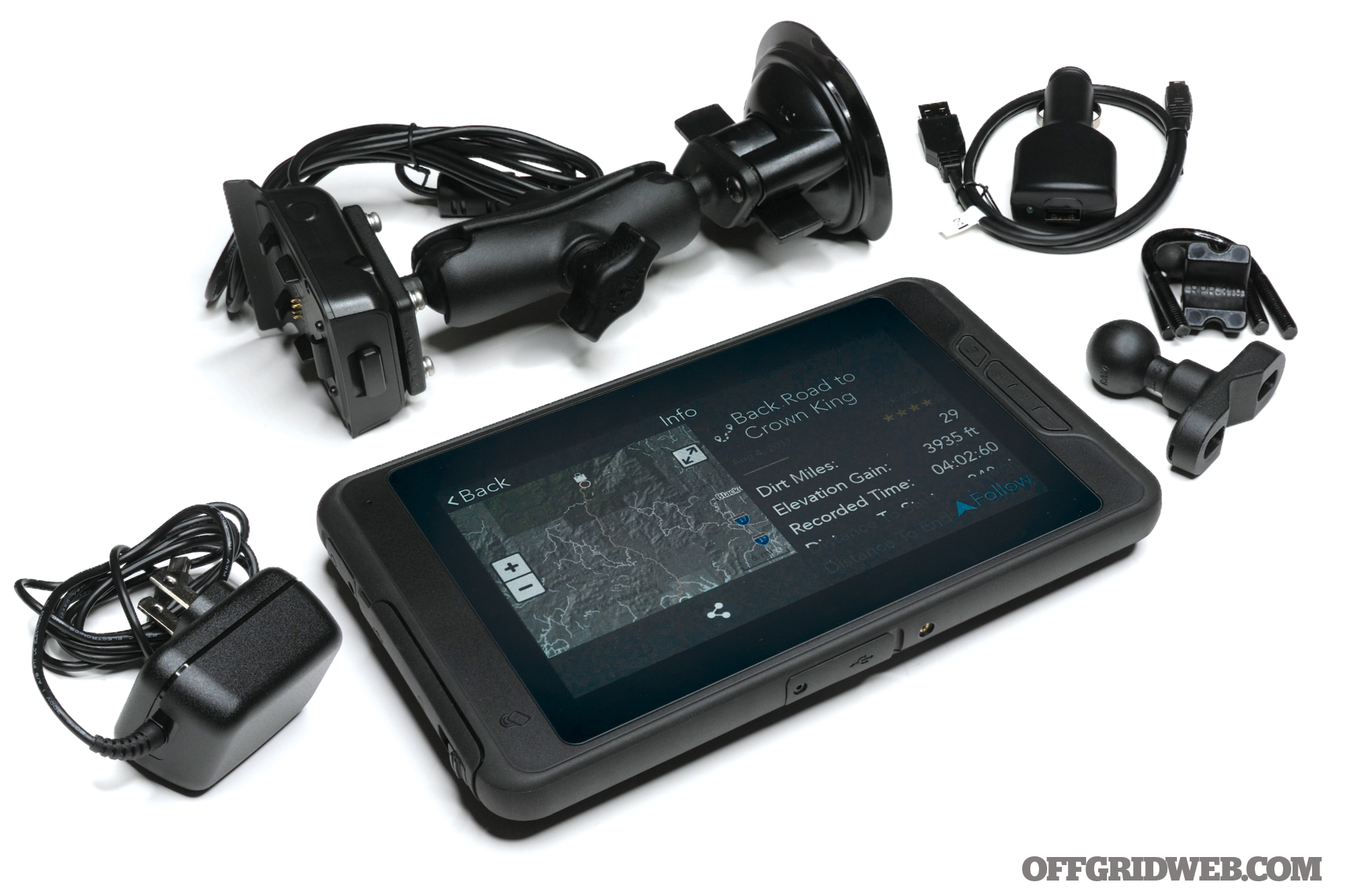
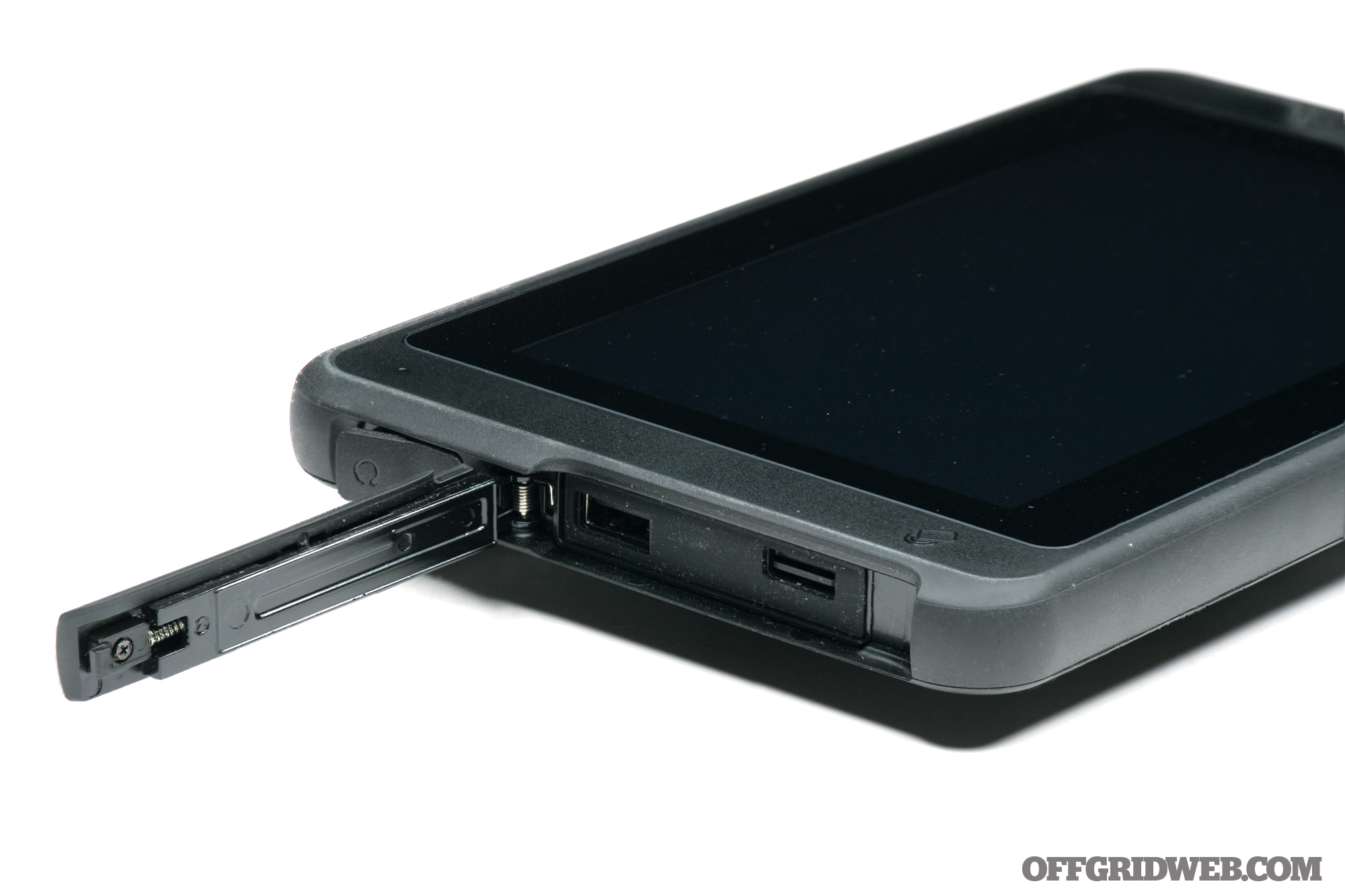
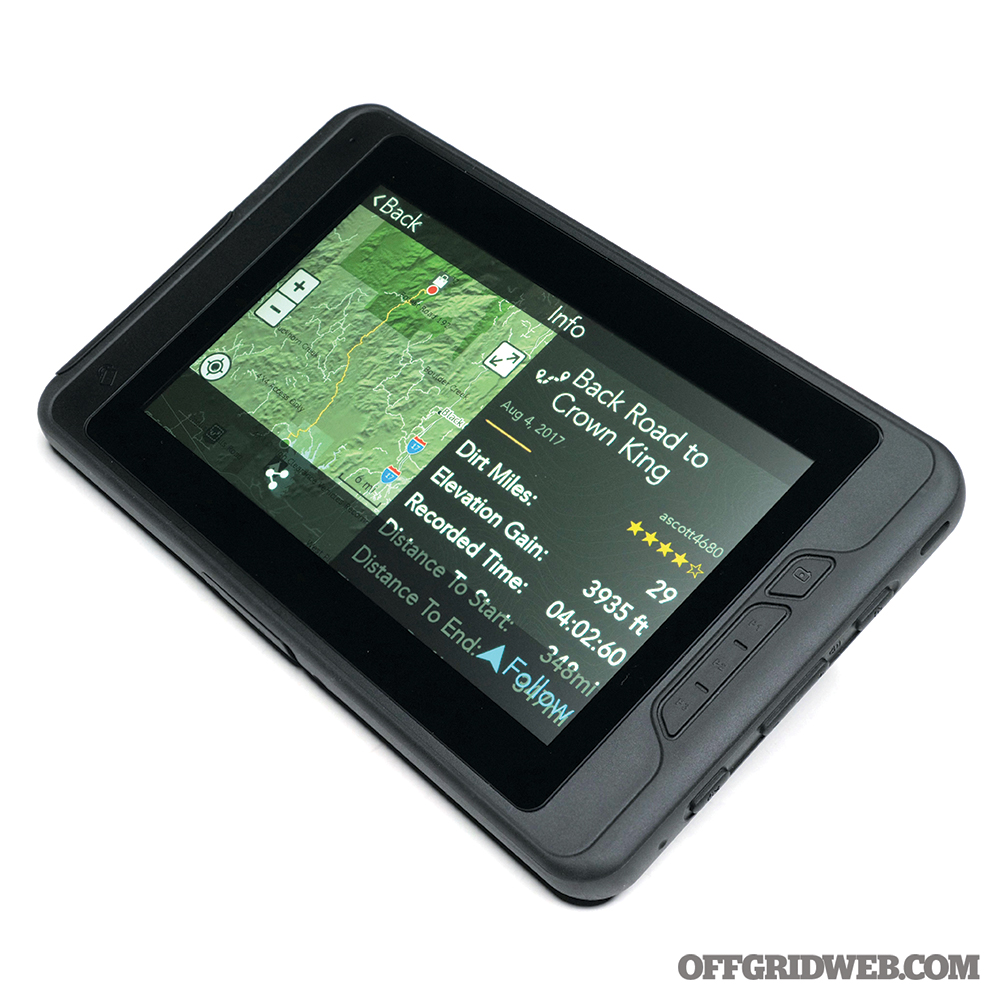
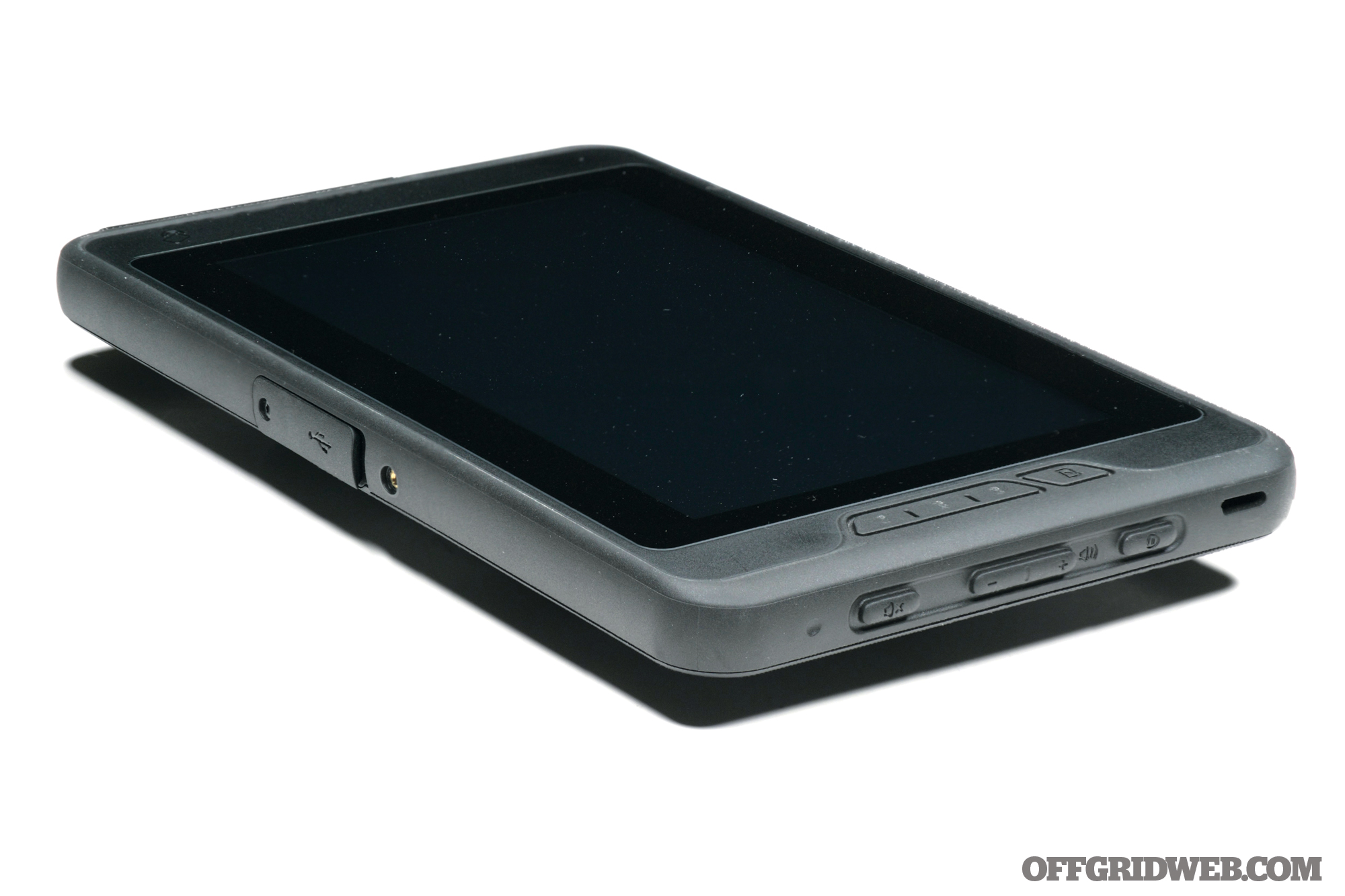

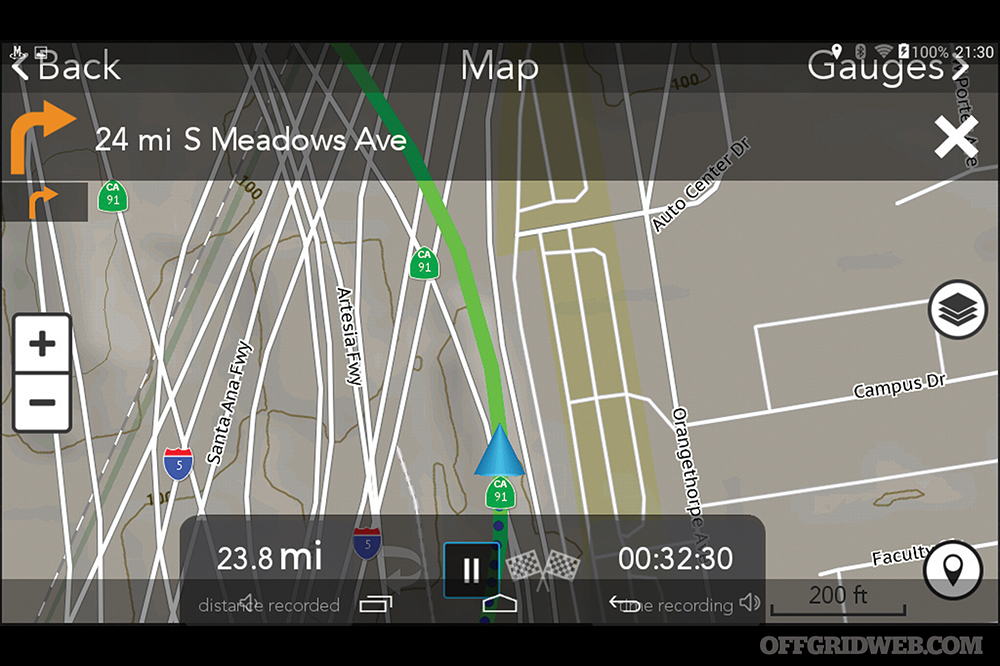

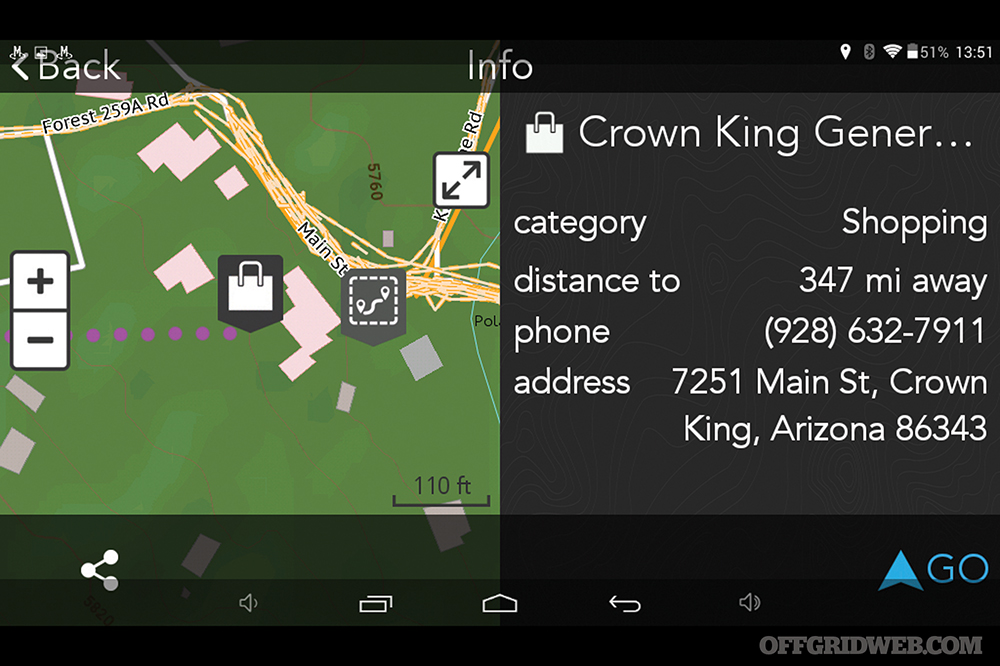




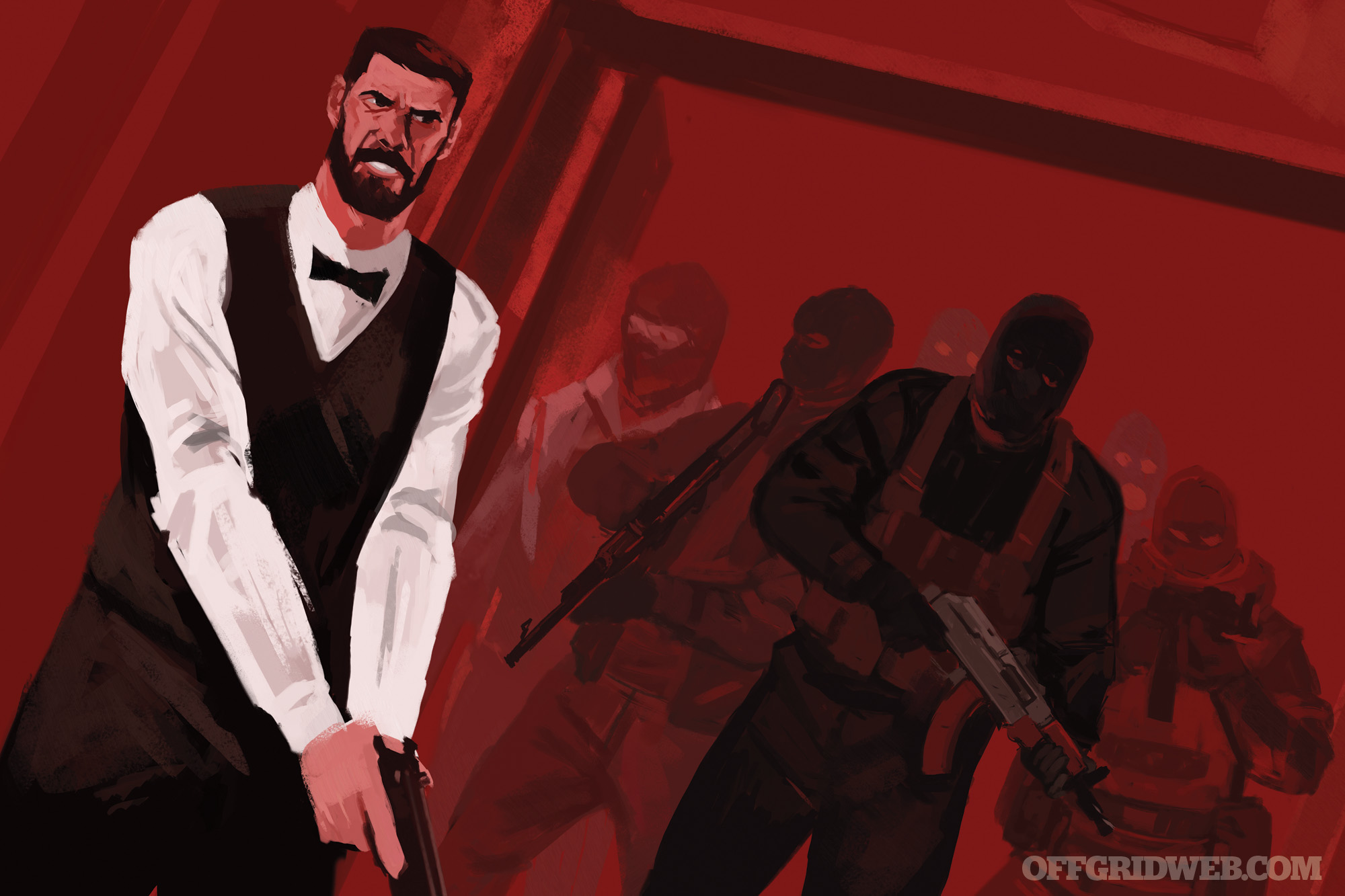
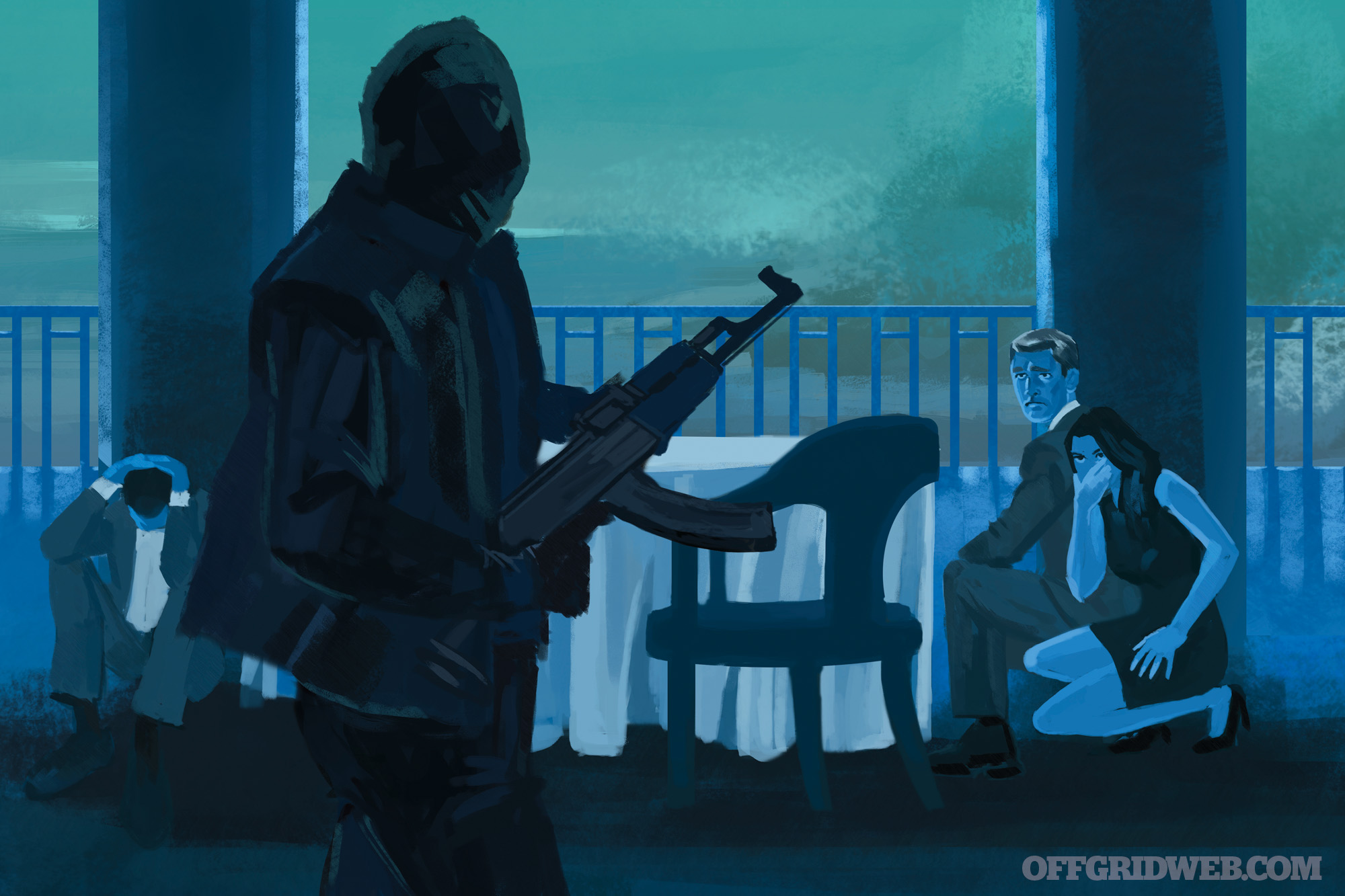
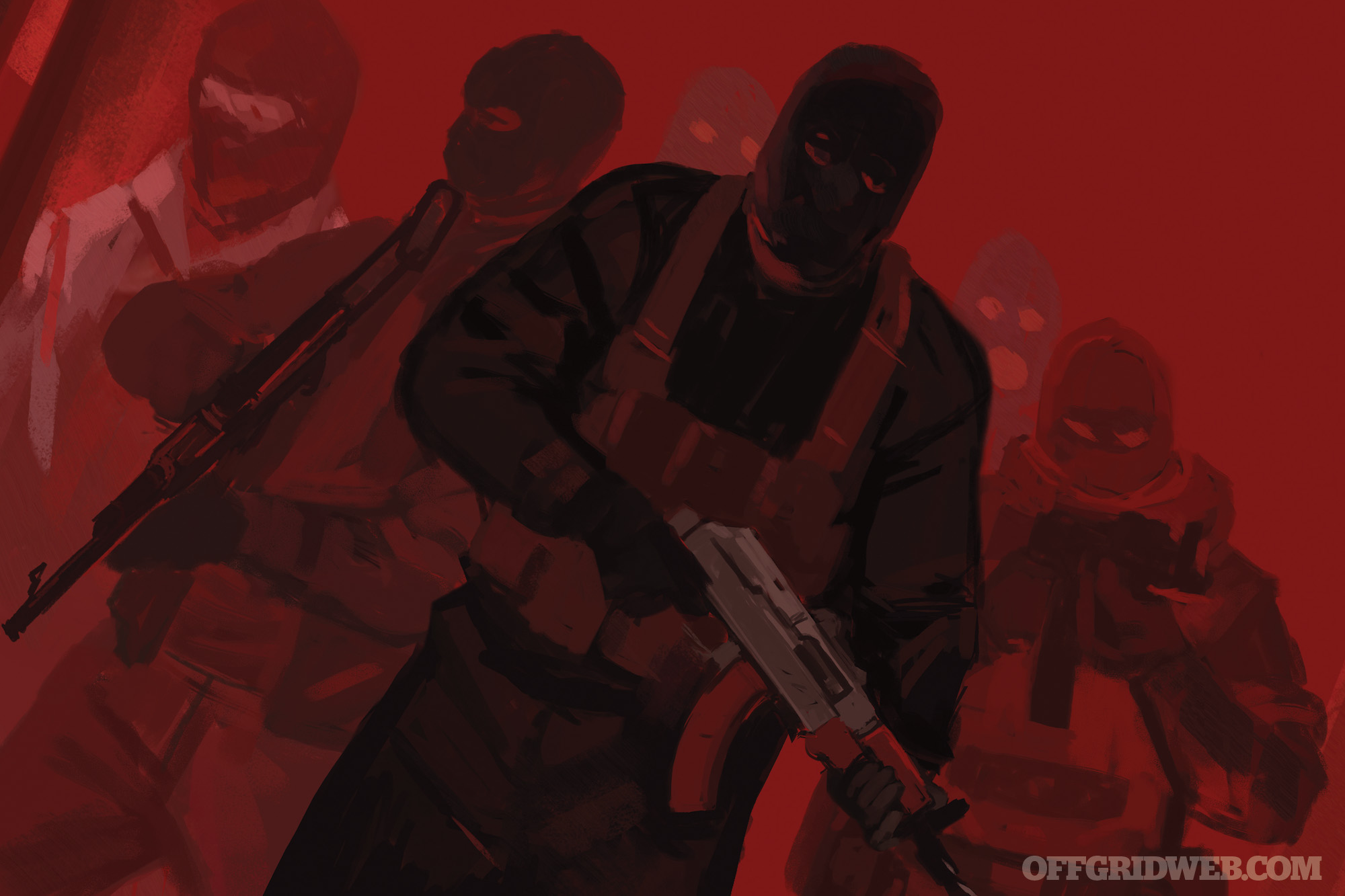
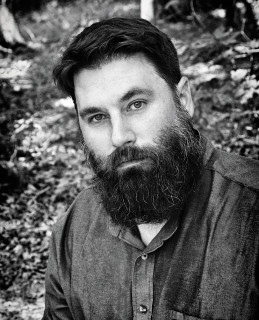 Tim MacWelch
Tim MacWelch Kris Southards
Kris Southards

